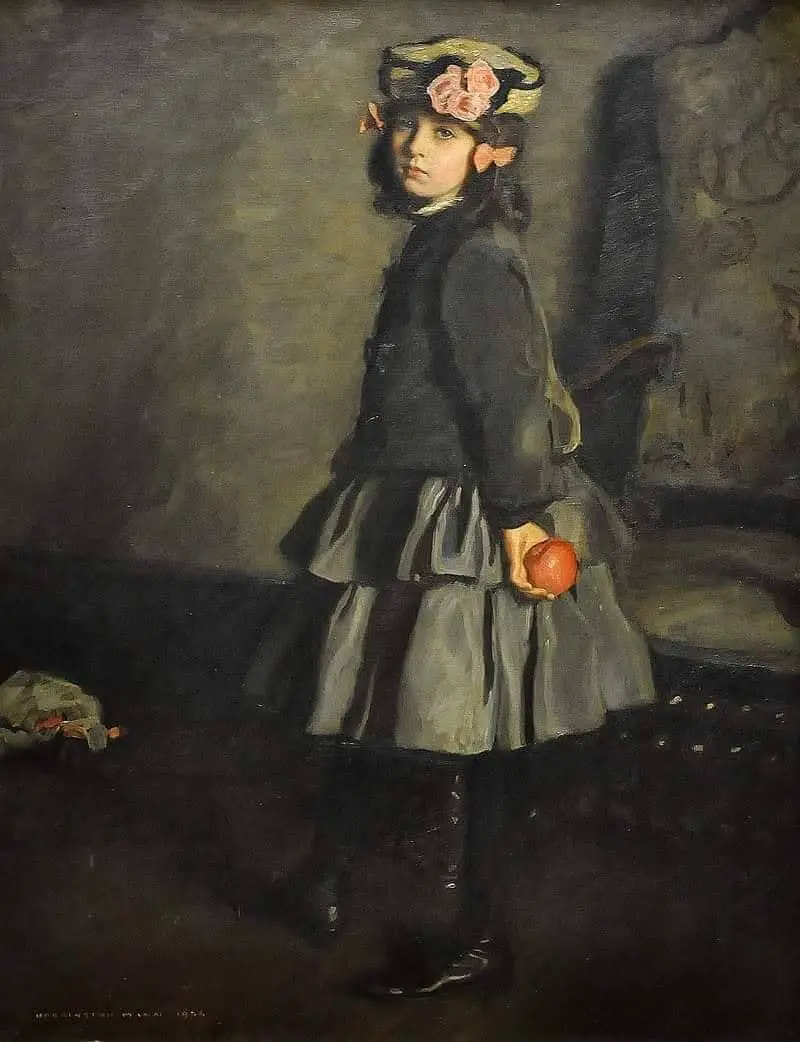In Judeo-Christian tradition, we have the story of the Garden of Eden. Eve tempted Adam with it. Was it an actual apple, like you’d buy at the supermarket today? In this case, ‘apple’ probably stands in for fruit, which metaphorically stands for temptation of any kind.

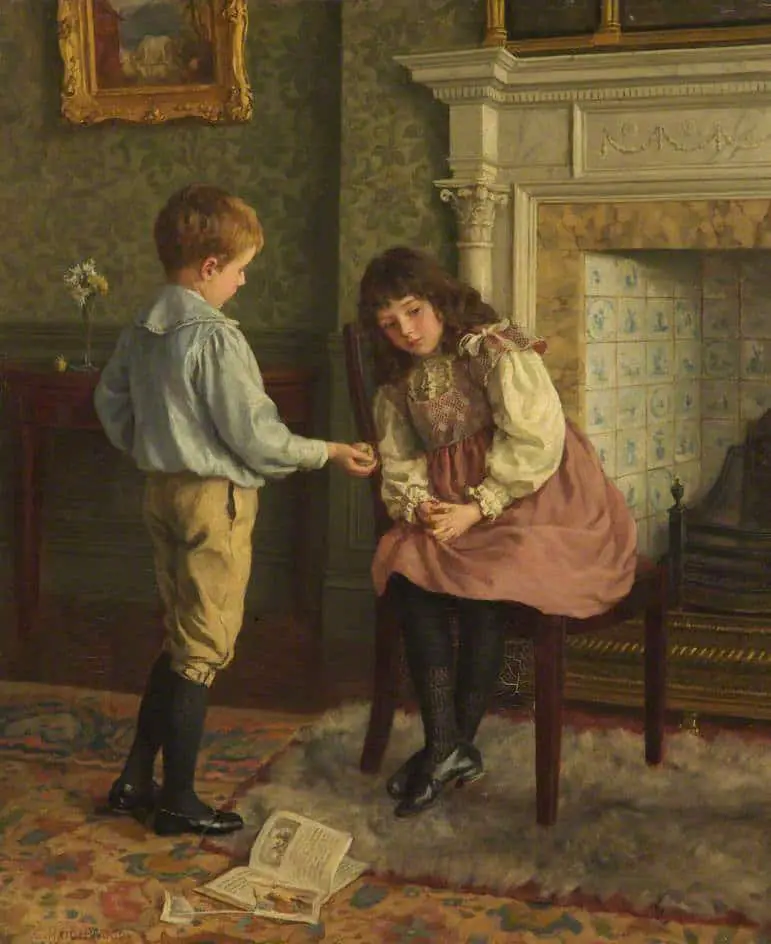
Apple >> fruit >> sweet >> temptation
Temptation >> fruit >> sweet >> temptation

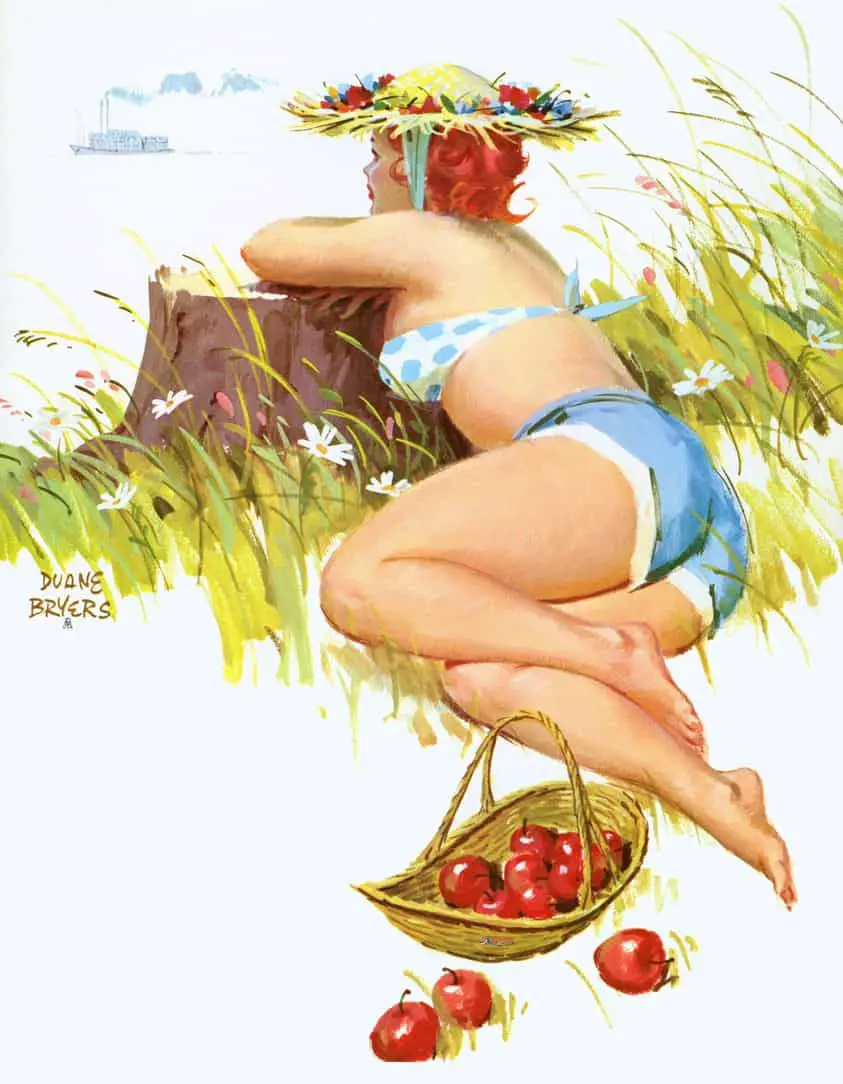
Being almost spherical in shape, the apple signifies totality. It is symbolic of earthly desires, or of indulgence in such desires. The warning not to eat the forbidden apple came, therefore, from the mouth of the supreme being, as a warning against the exaltation of materialistic desire. The intellect, the thirst for knowledge—as Nietzsche realized—is only an intermediate zone between earthly desire and pure spirituality.
A Dictionary of Syjmbols by J.E. Cirlot
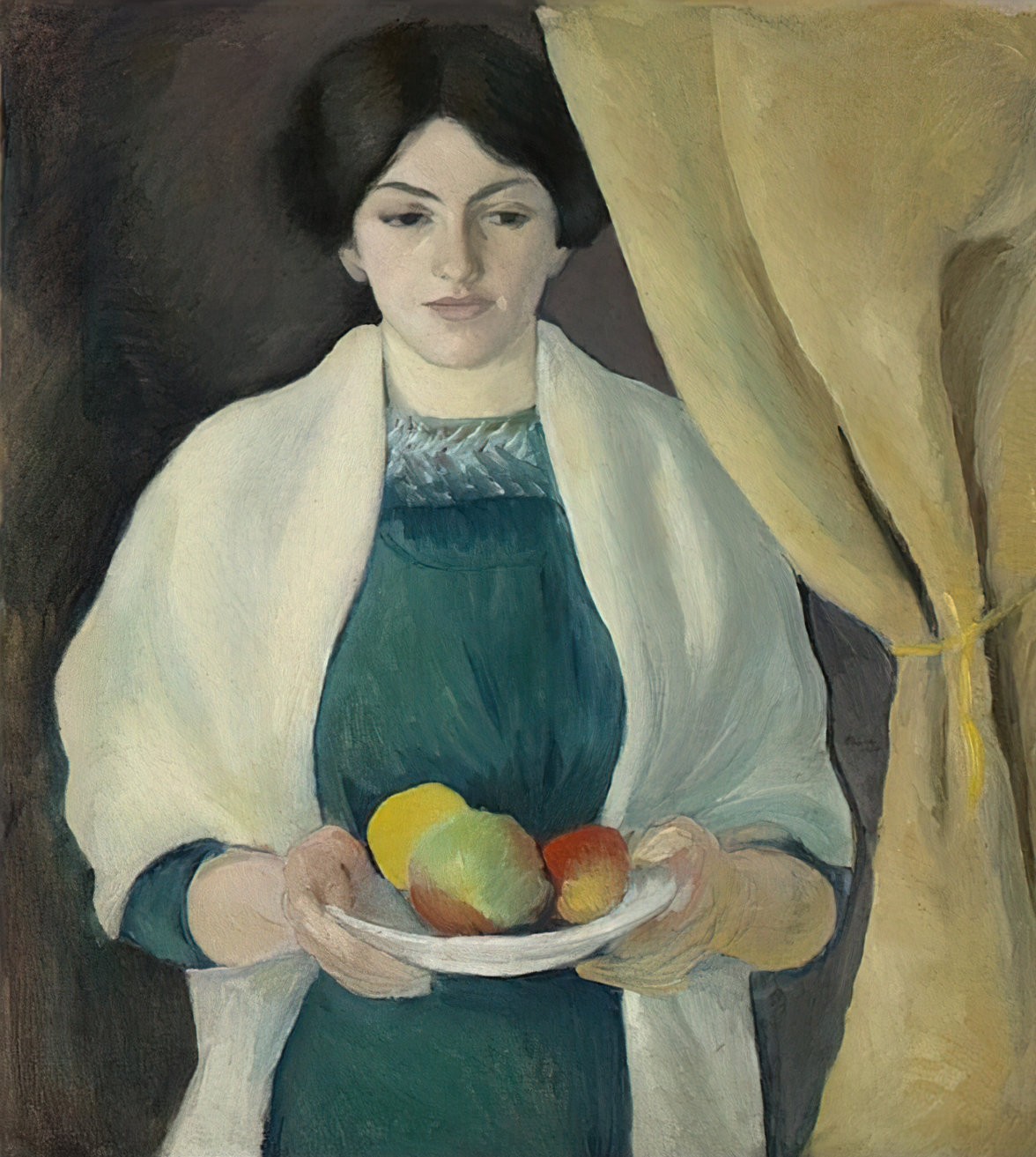
Keep fresh fruit around. Even if you end up throwing a couple apples out once in a while, it’s hugely valuable to have a tasty fruit closer at hand than junk food.
In case you missed it, humanity has fully optimized apples. Snapdragon, Zestar and Cosmic Crisp if you can find them, Honeycrisp or SweeTango as backup, Fuji in a pinch. All other cultivars are a distraction.
Less Wrong
APPLES AND FAIRYTALE
THE TALE OF THE THREE APPLES
This story comes from the Middle East and is one of the earliest known murder mysteries. A dead body is found in the Tigris River. The caliph’s adviser must solve the crime.
If you’d like to hear “The Tale of the Three Apples” read aloud, I recommend the retellings by Parcast’s Tales podcast series. (They have now moved over to Spotify.) These are ancient tales retold using contemporary English, complete with music and Foley effects. Some of these old tales are pretty hard to read, but the Tales podcast presents them in an easily digestible way. “The Tale of the Three Apples” was published March 2021.
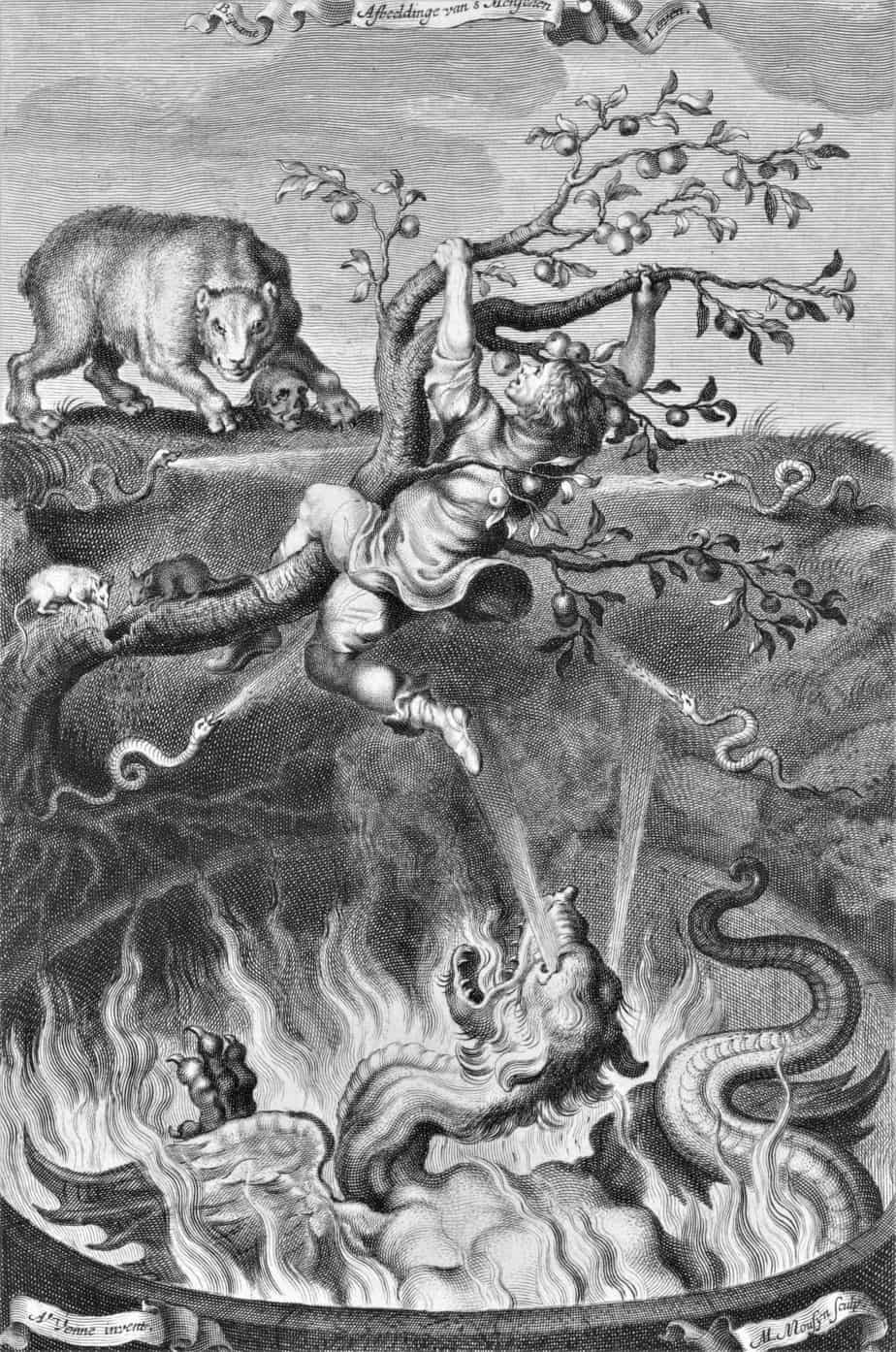
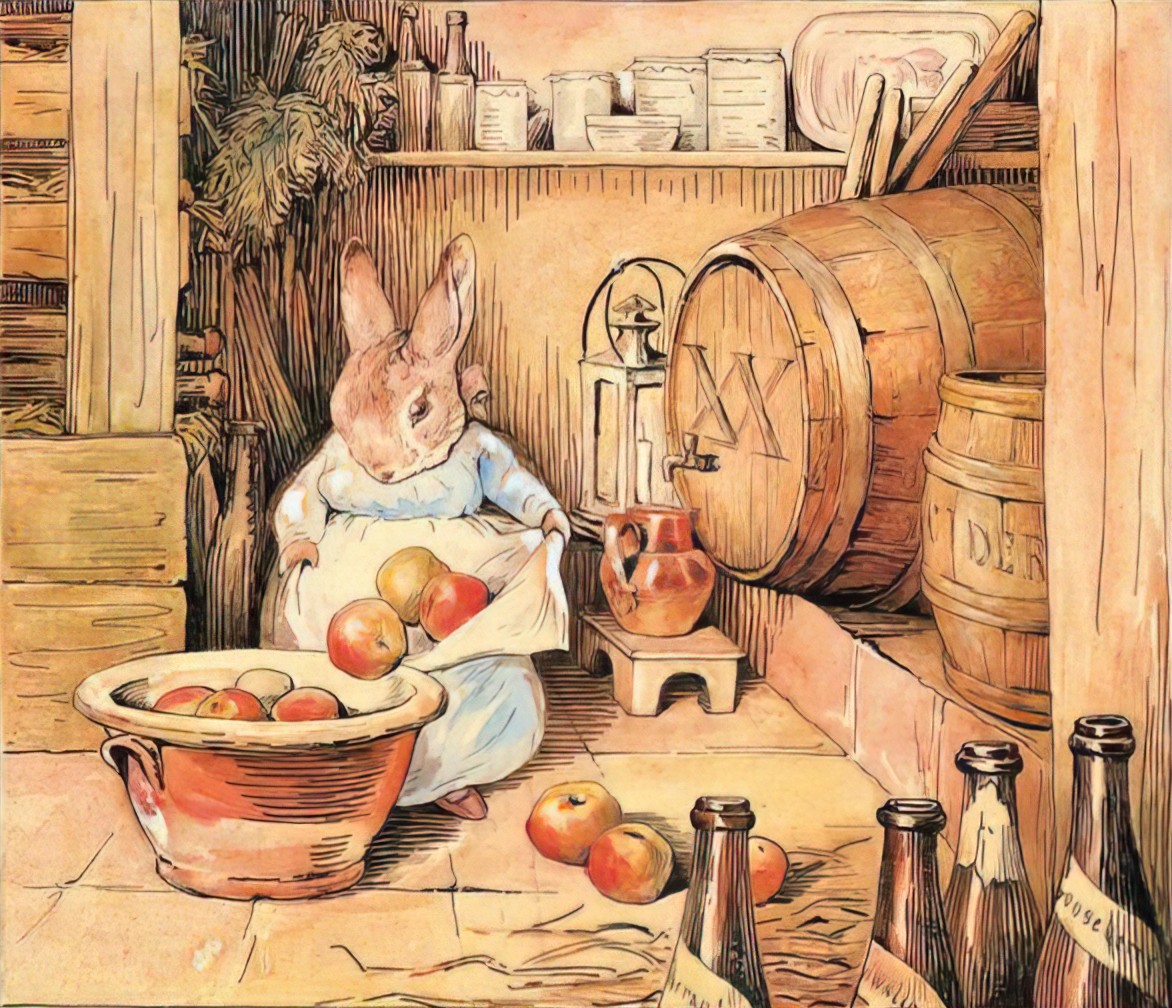
Cider is delicious and it is historic. It is America’s first popular alcoholic beverage, made from apples brought across the Atlantic from England in colonial times. And over the past fifteen or so years it has been enjoying something of a revival. To appreciate the differing tastes of cider one needs to know more about the apples and the history as “Cider embodies the best and worst of America’s history and agricultural practices.” Cider specialists and authors Dan Pucci and Craig Cavallo delve deep into the topic in their recent book, American Cider: A Modern Guide to a Historic Beverage.
American Cider
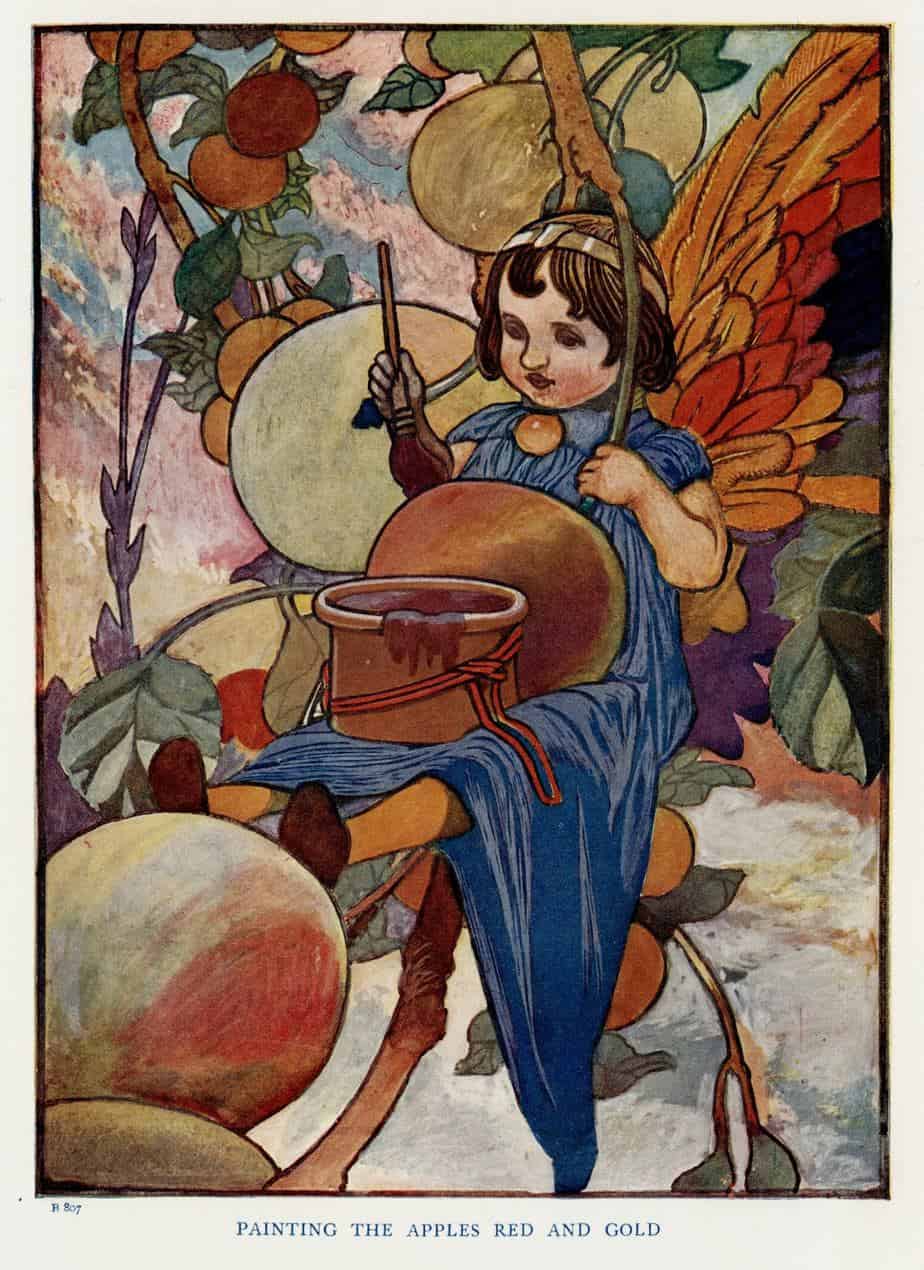
Fairytales are also full of apples, or temptation.
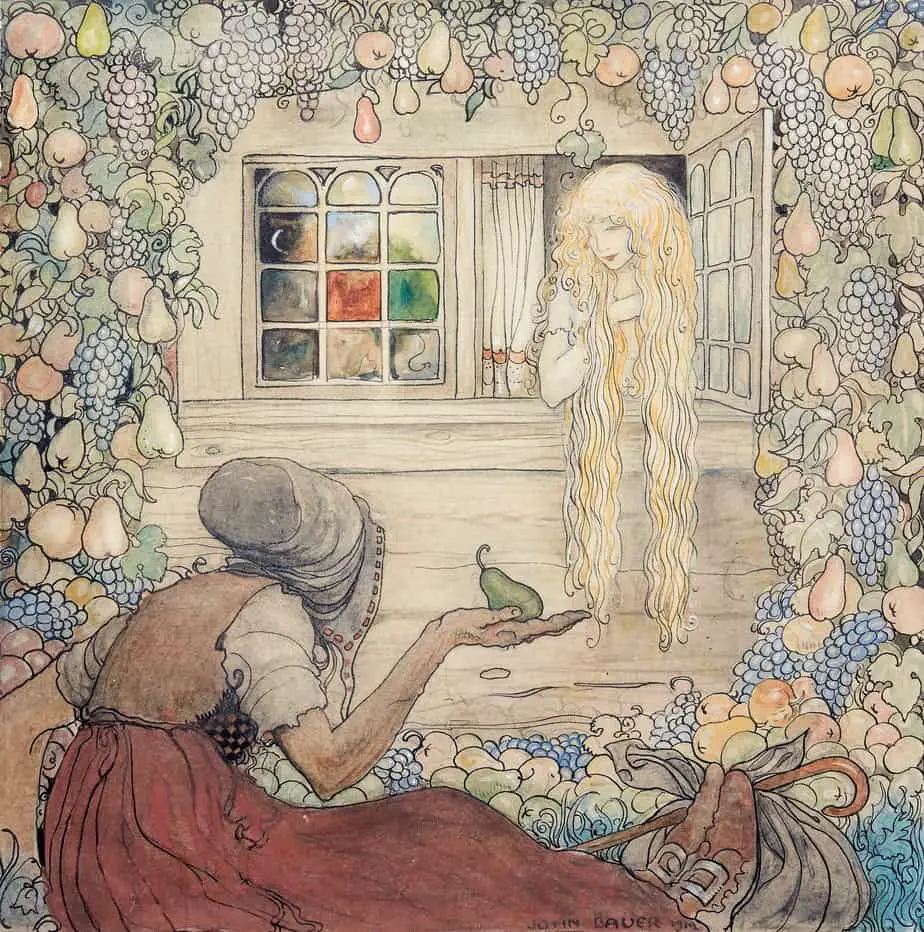
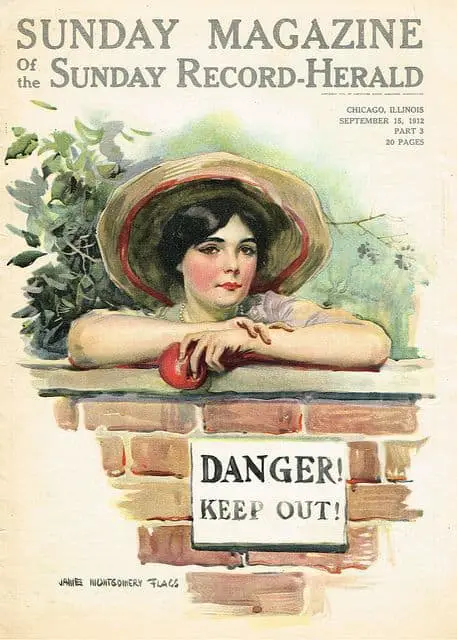
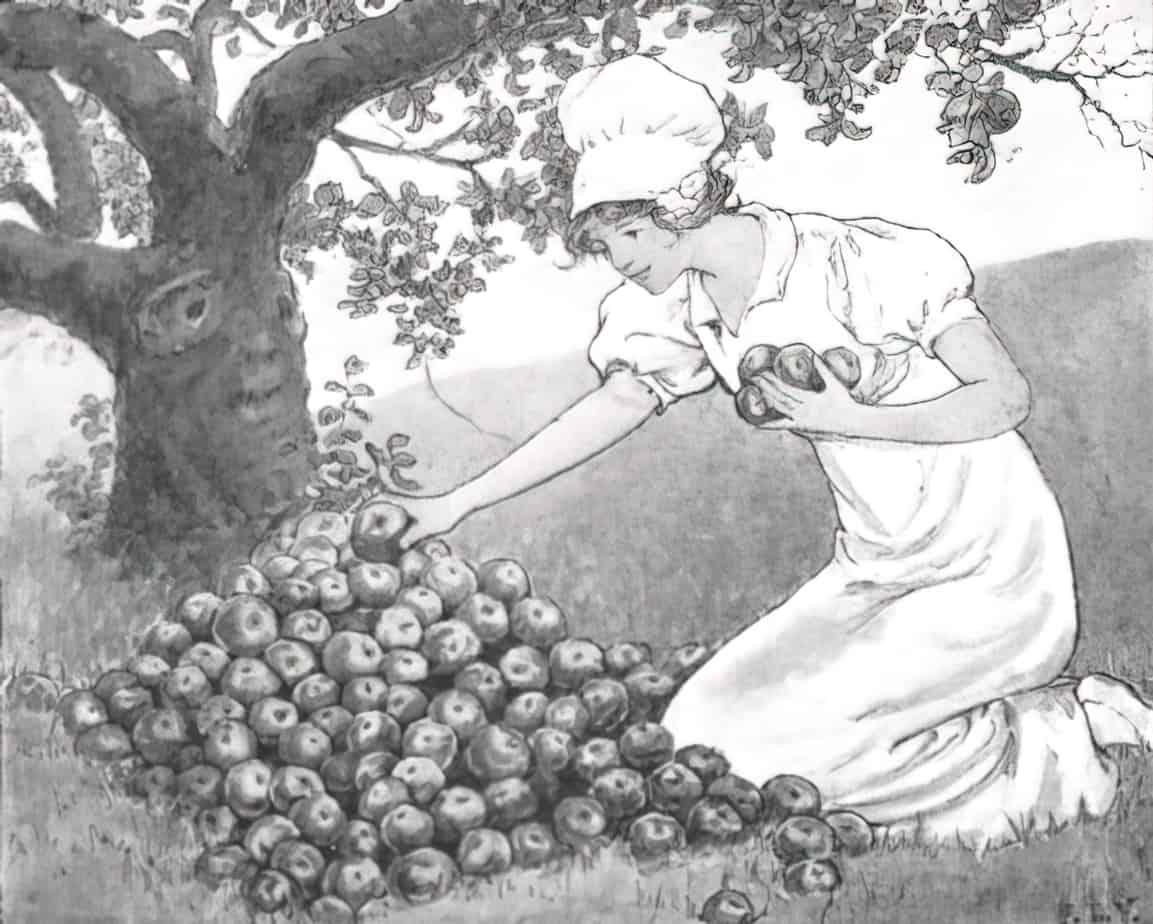
As she walked along, she came to a tree full of apples.
The tree cried, “Shake me! shake me! my apples are all quite ripe!”
“Indeed I will!” cried the maiden.
So she shook the tree again and again, until there was not an apple left on its branches.
Then she picked up the apples, one by one, and piled them in a great heap.
Frau Holle
Why do the talking apples call out to the Beautiful Daughter in “Old Mother Frost”? It’s basically a Save The Cat moment. Later, when the Ugly Daughter visits the other realm, she’ll ignore the talking apples. That daughter is punished accordingly.
So if you ever hear apples calling out to be picked, do it.
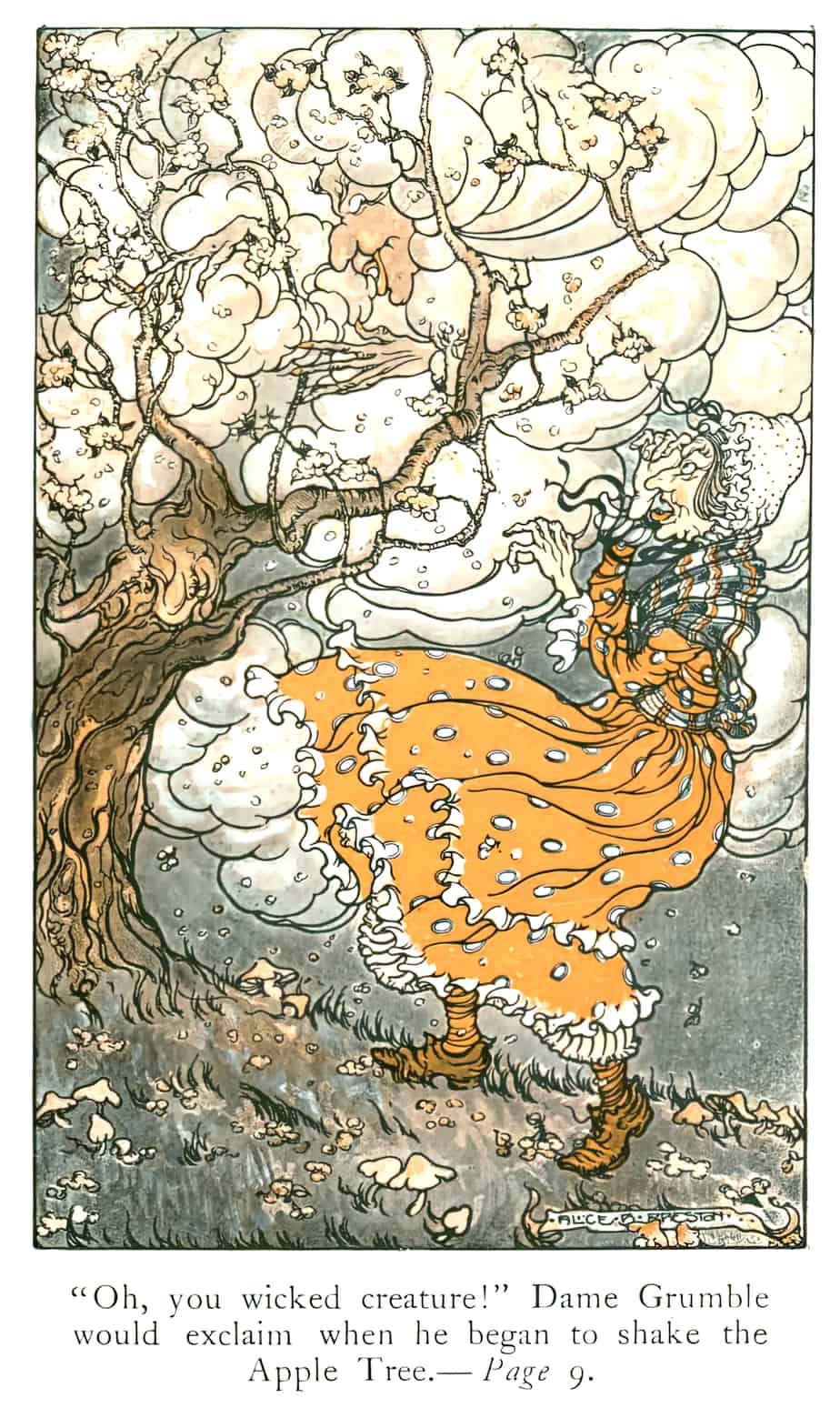
APPLES IN CHILDREN’S STORIES
I grew up on the Little Critter picturebooks by Mercer Meyer. When I look at them now they seem a little outdated, but only in that nice 1950s sort of way, and hey, aren’t people still making modern films set in that very strange period known as the 1950s?
One thing that bothered me when I was four, however, was the state of discarded apple cores. Mercer Mayer apple cores are no such thing: They are a total waste of apple.
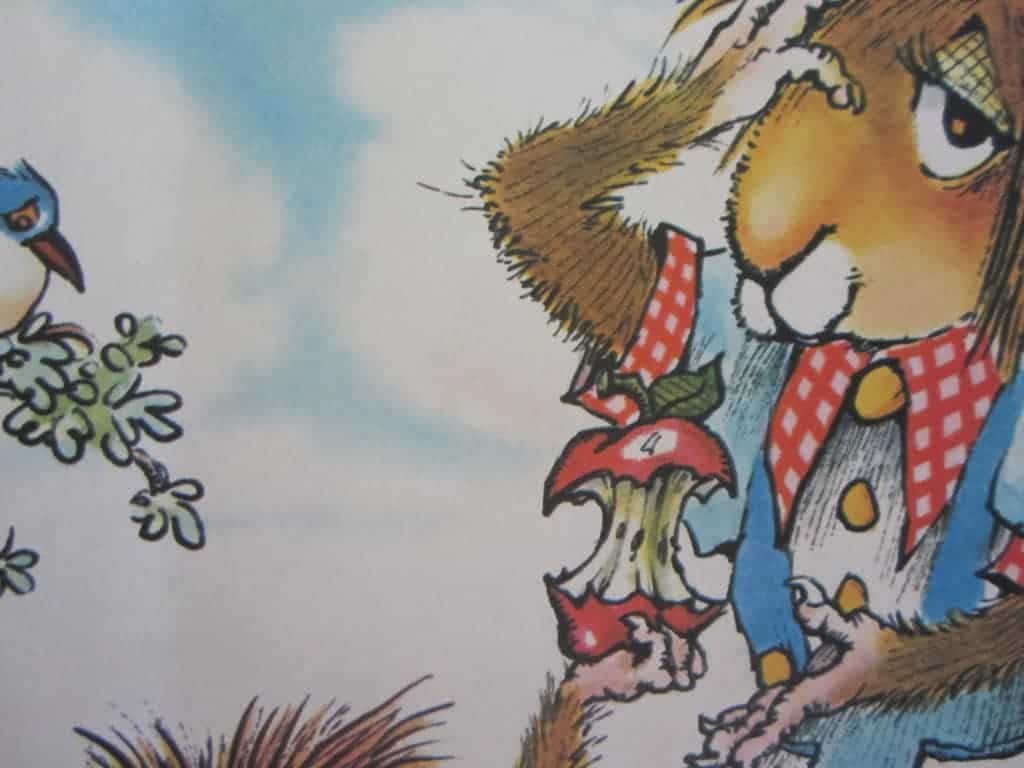
I admit that in this story the apple is meant as a present for the mother and therefore Little Critter may have deliberately left some flesh on the core, but I also remember apple cores strewn around on the ground which had no more than a few bites out of them.
Then again, apple cores are a myth. There’s no reason except for the cultural one why we eat apples to leave the archetypal core.
I don’t remember much about Pinocchio, but I remember someone being so hungry they ate an entire apple, core, seeds and all. A commenter writes on this post:
I remember as a child having the concept of real, actual, starving hunger come home to me for the first time in that book when Pinocchio refuses to eat the apple core, although Gepetto encourages him to, until he is so hungry that later he begs Gepetto for the core and skin of the apple.
I identify with that. I think I even tried eating the core and seeds, but only tried that once. Sometimes it’s the smallest detail that resonates.
Here’s a memorable few paragraphs from one of my favourite adult books, Larry’s Party by Carol Shields:
Larry loves to see a woman with raindrops in her hair.
And he loves to see a woman walking briskly while eating an apple, piercing the skin with her eager teeth. His first wife, Dorrie, was a daring eater of apples, grasping them firmly and gnawing them straight to their economical cores.
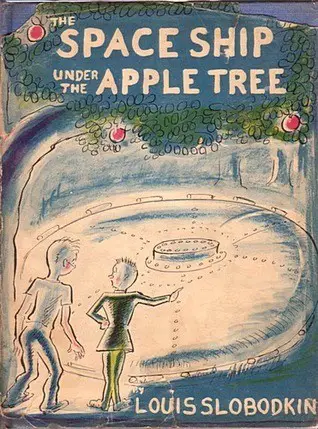
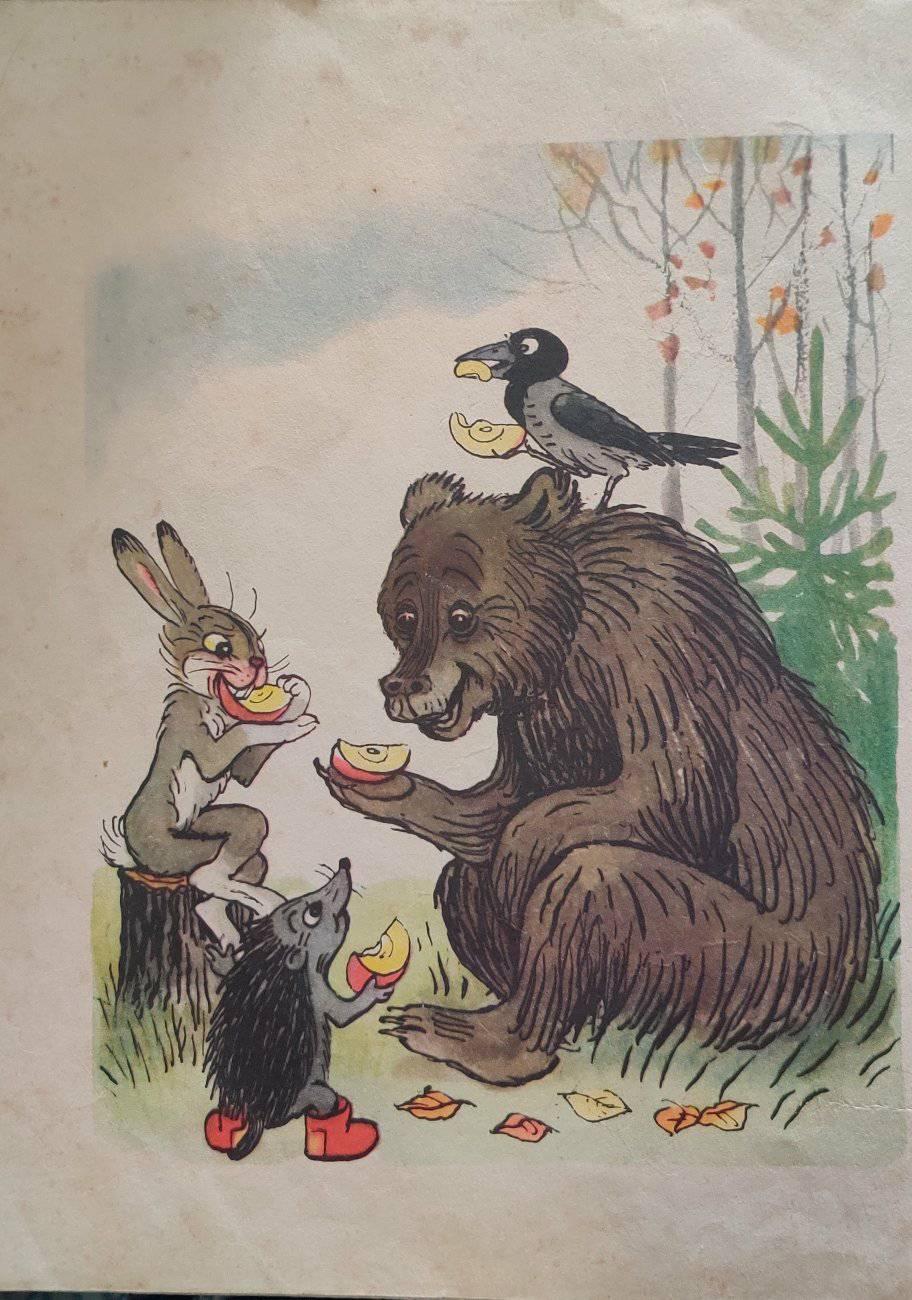
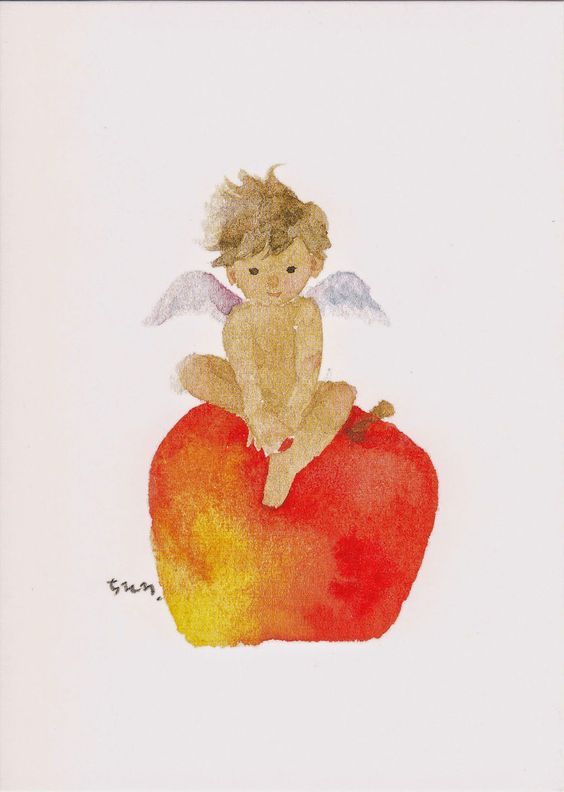
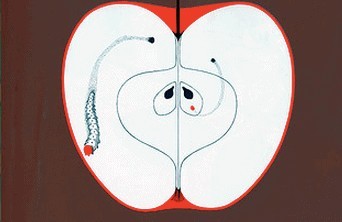
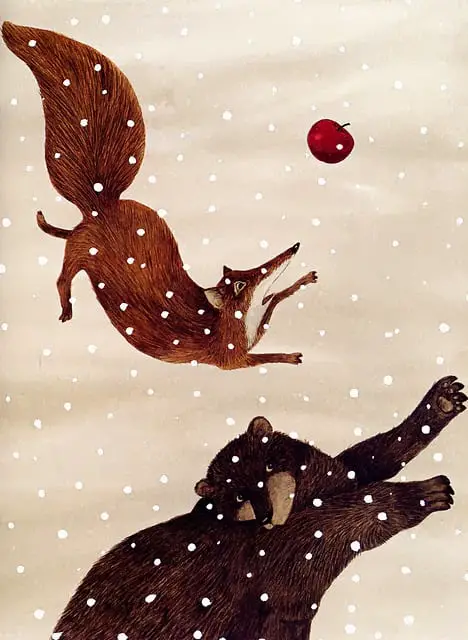
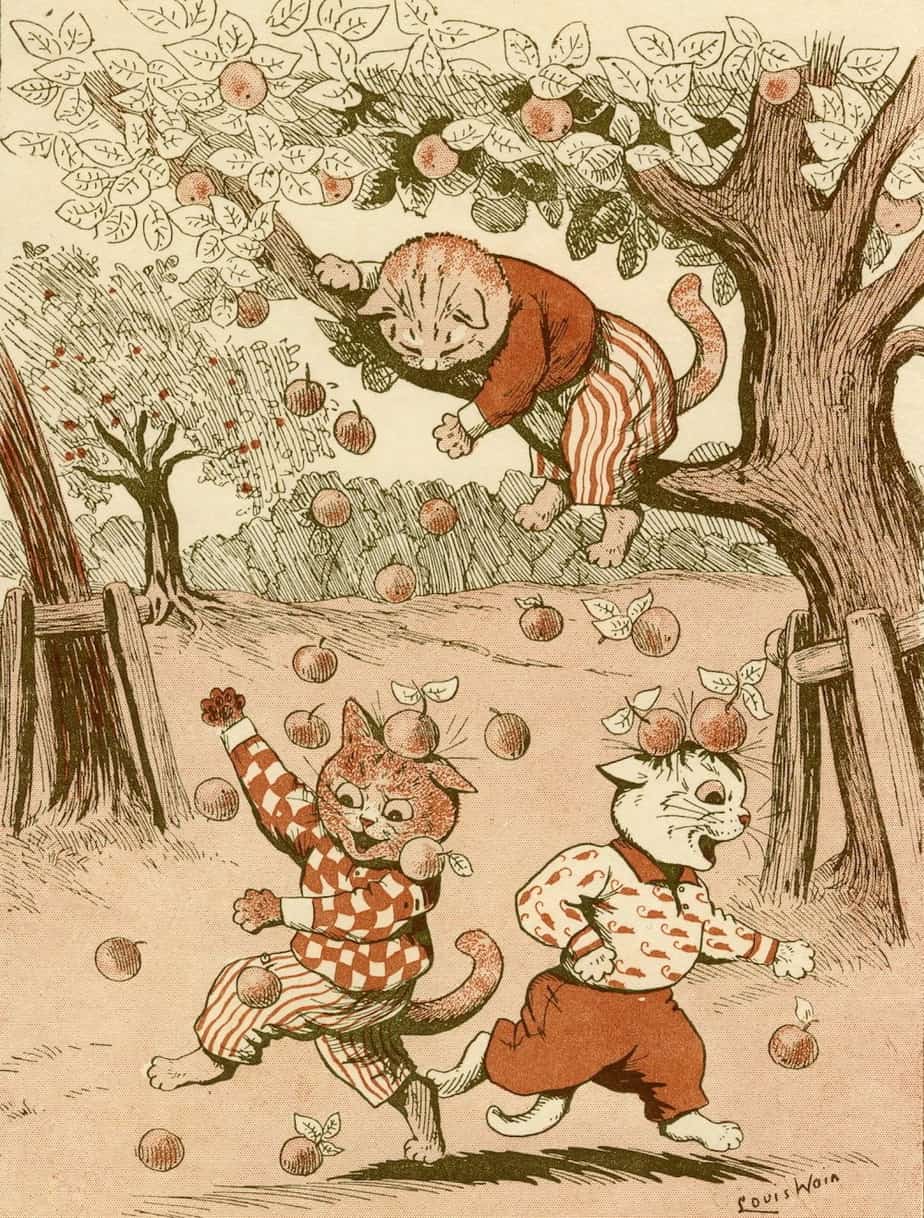
APPLES, HALLOWEEN AND THANKSGIVING
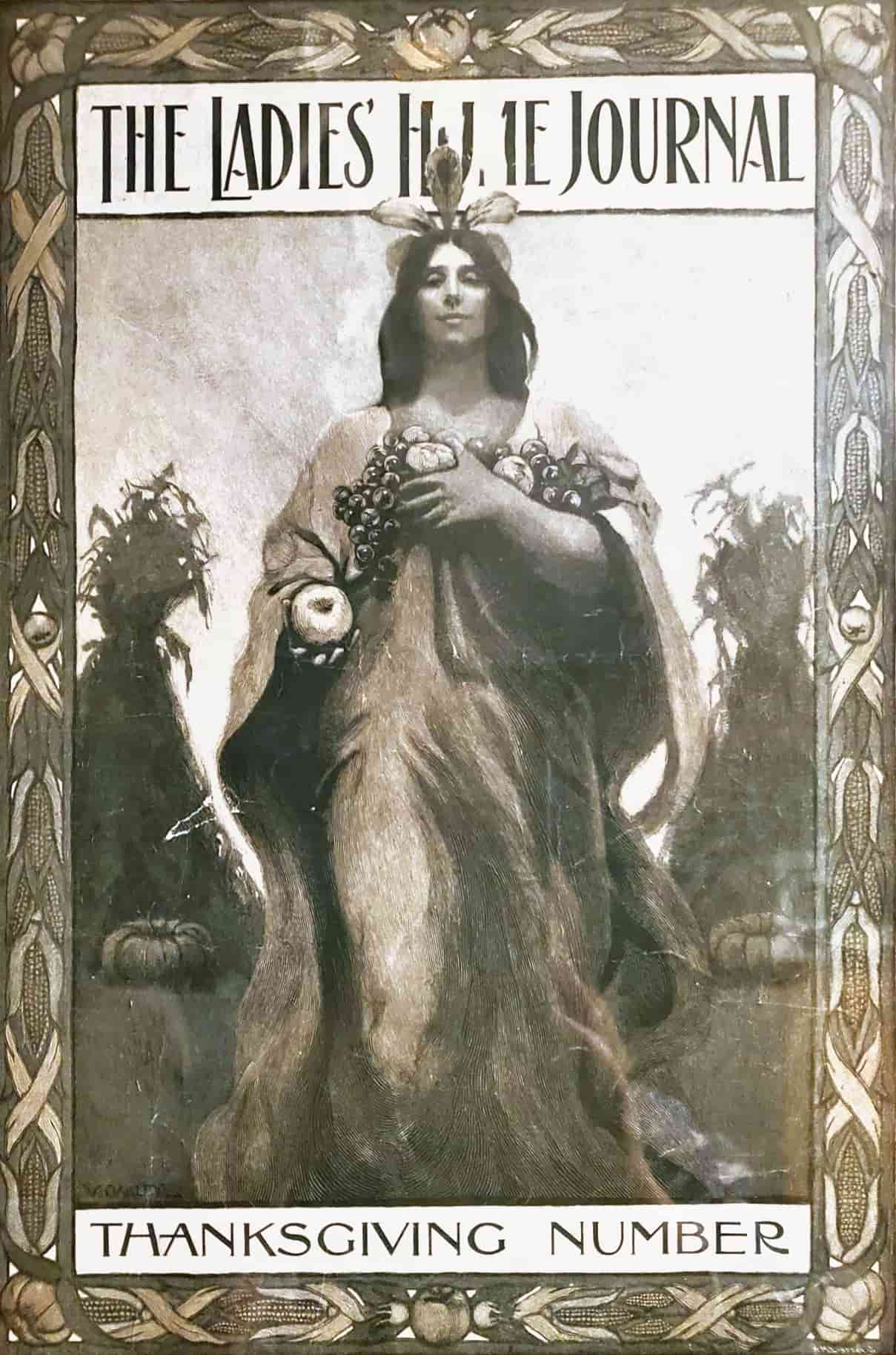
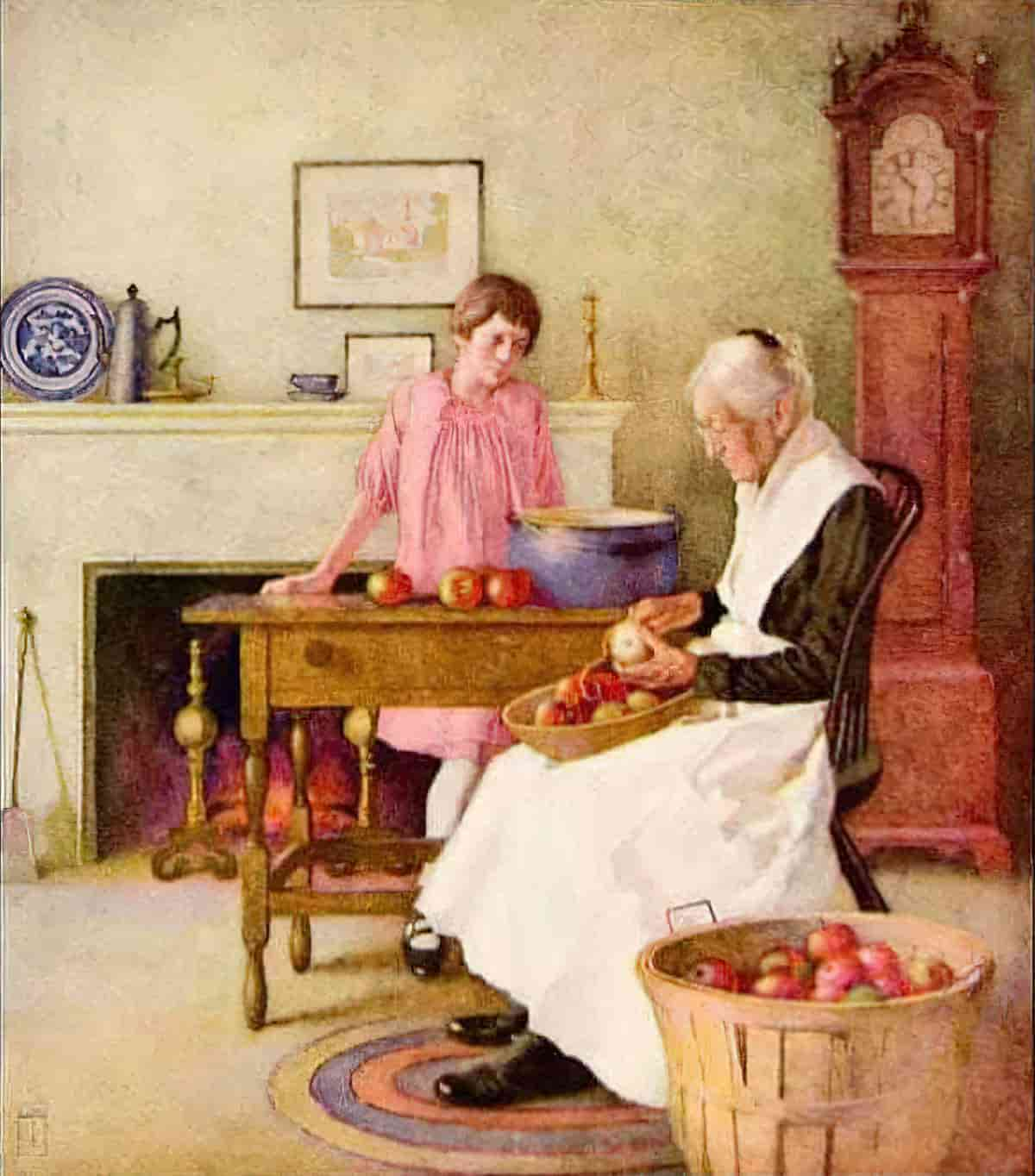
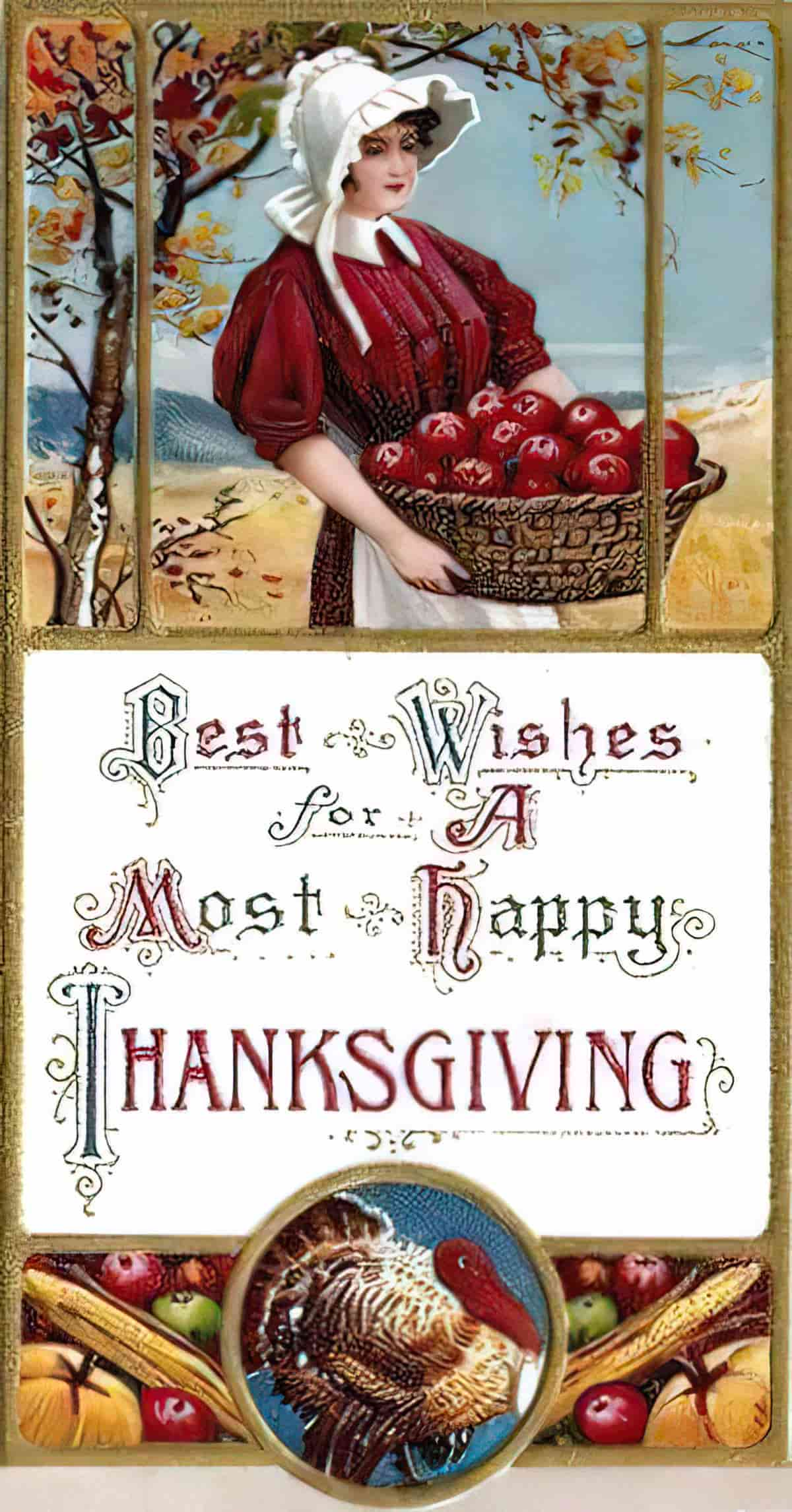
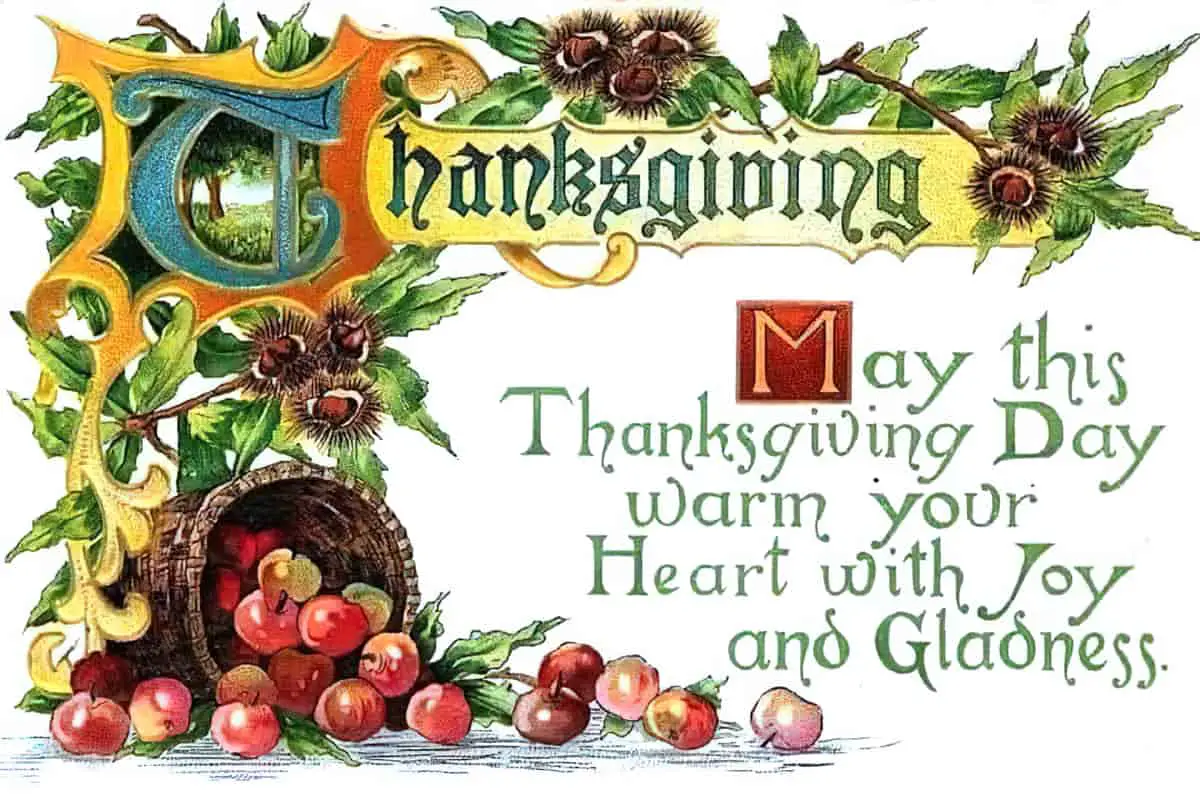
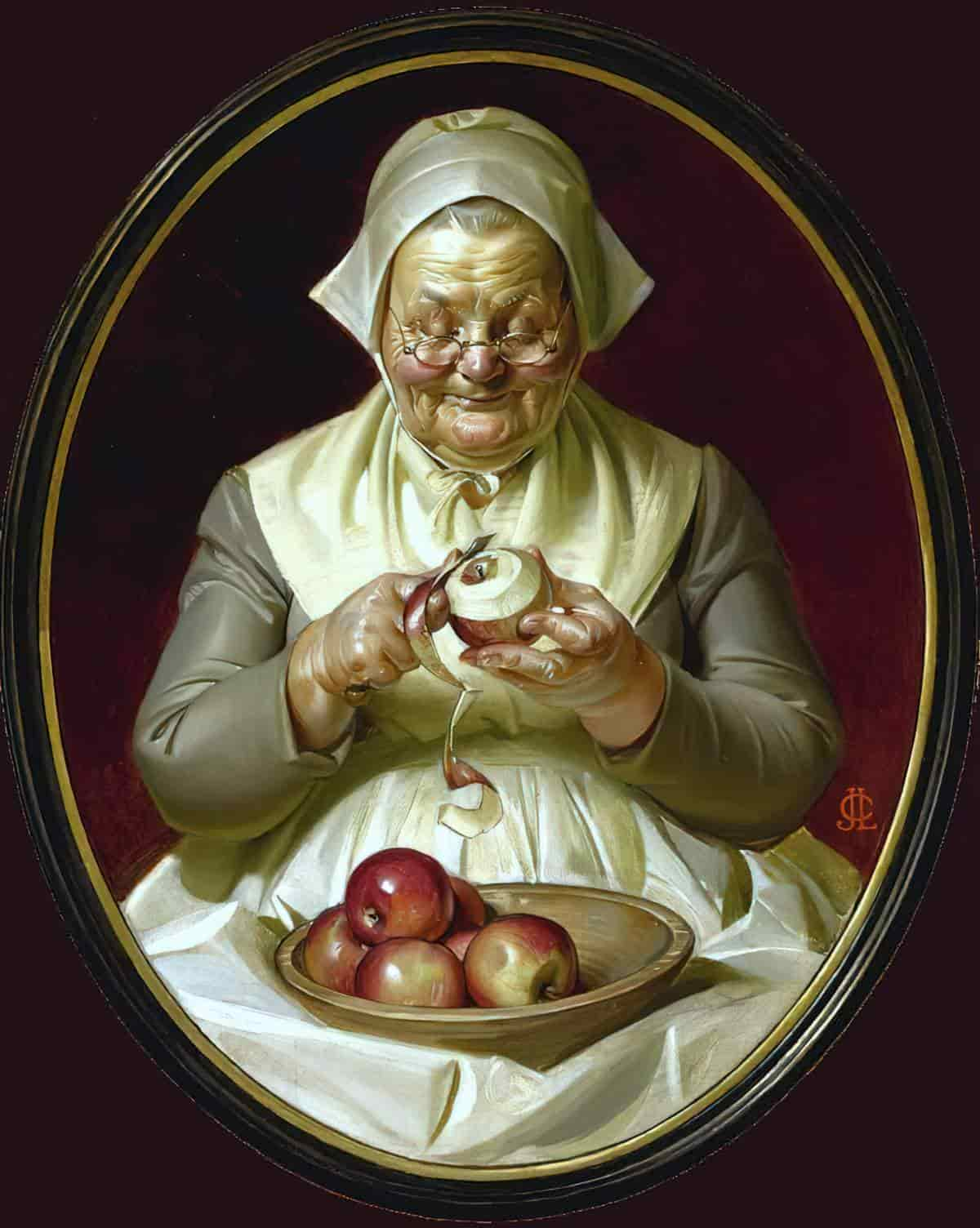
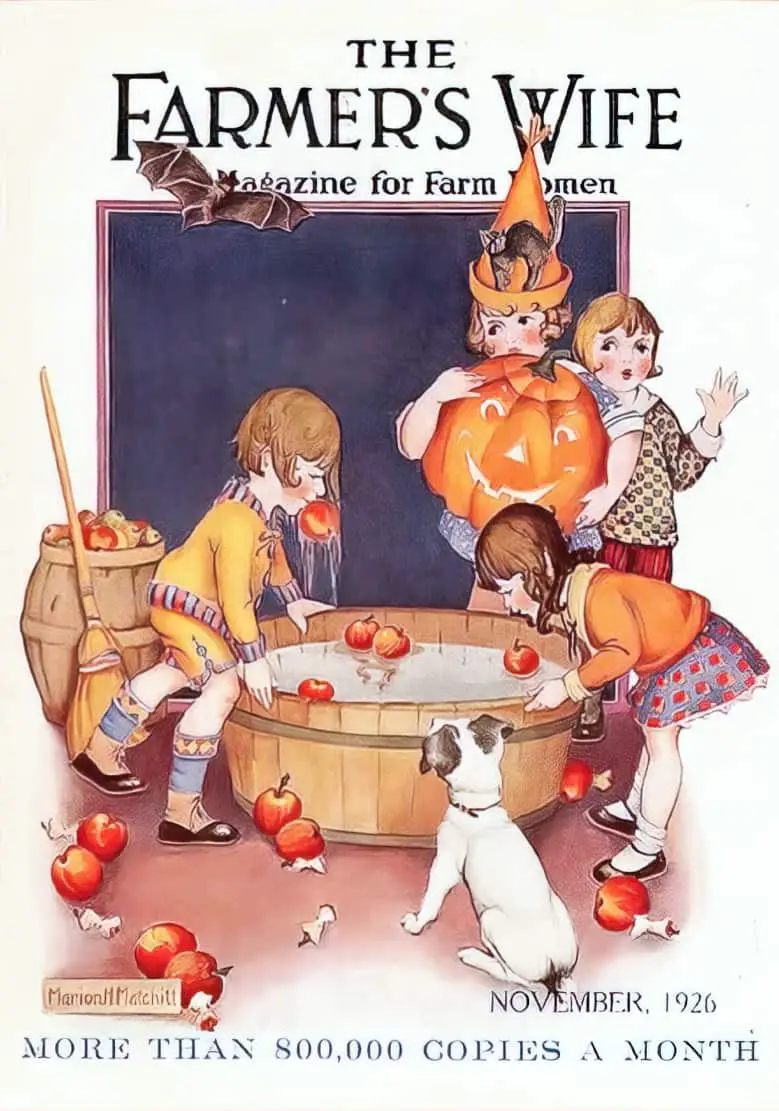

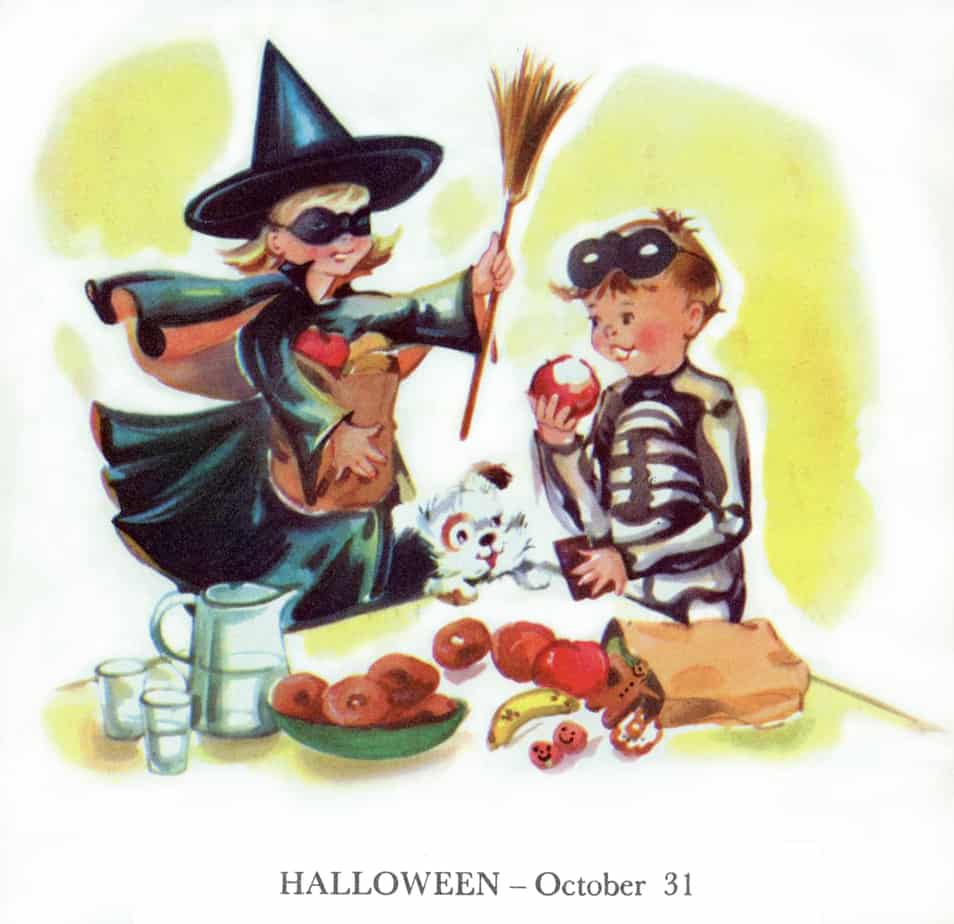
APPLES IN ADVERTISING
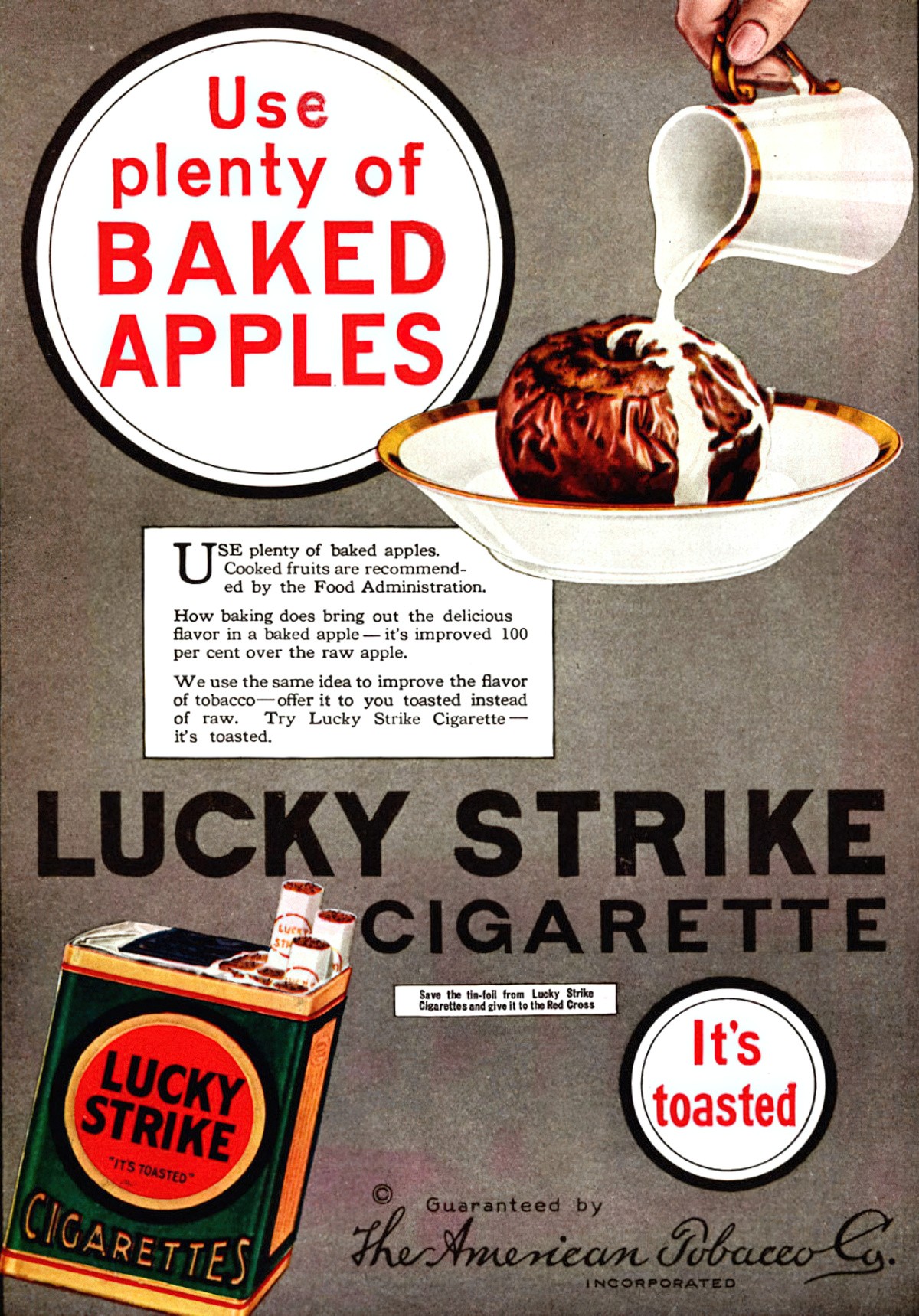
APPLES IN FINE ART
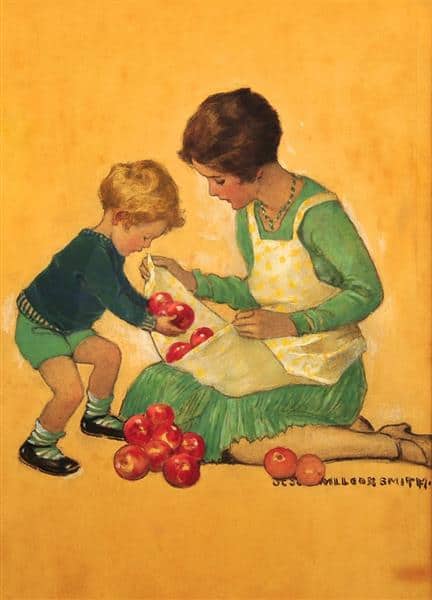
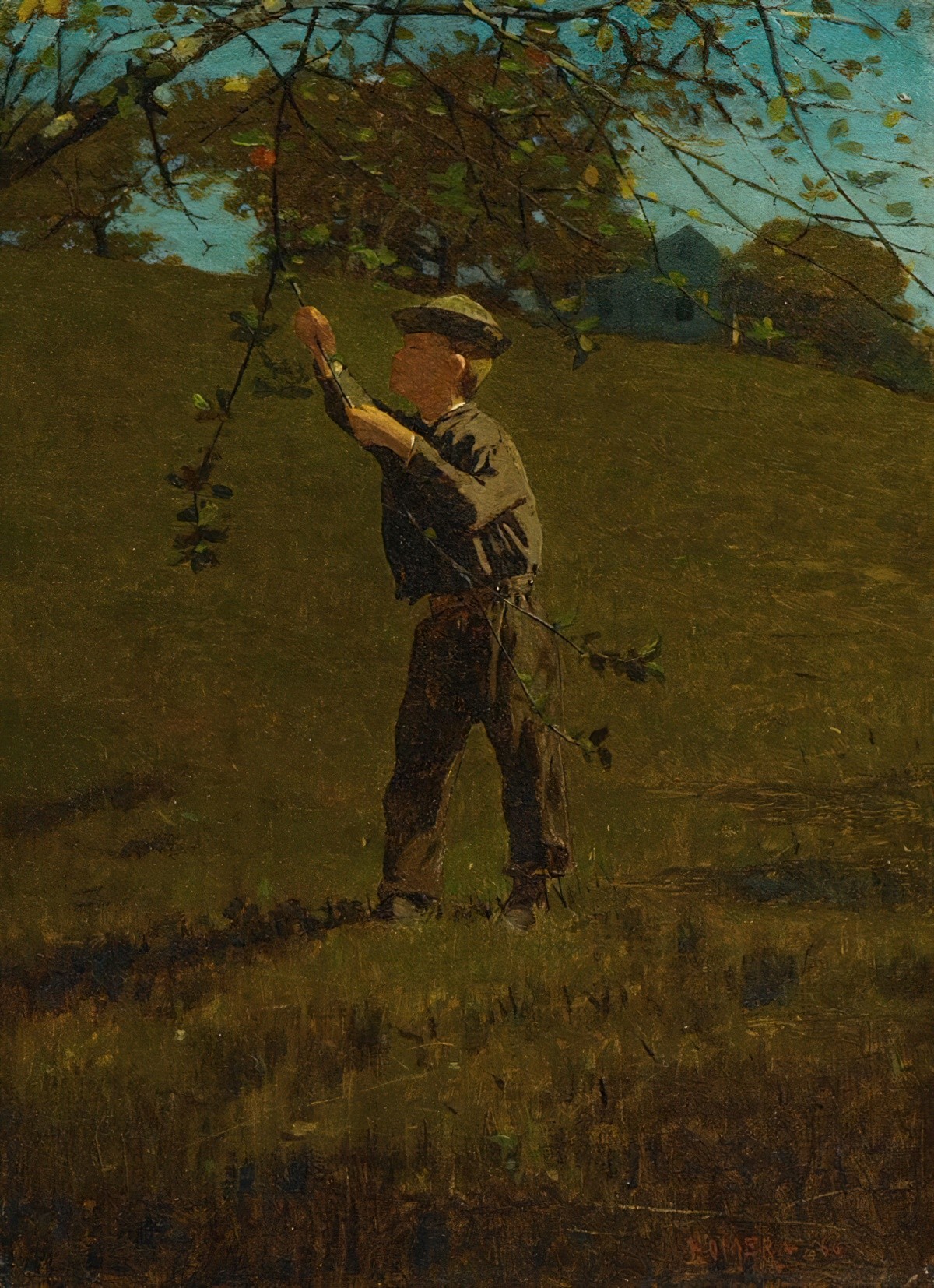
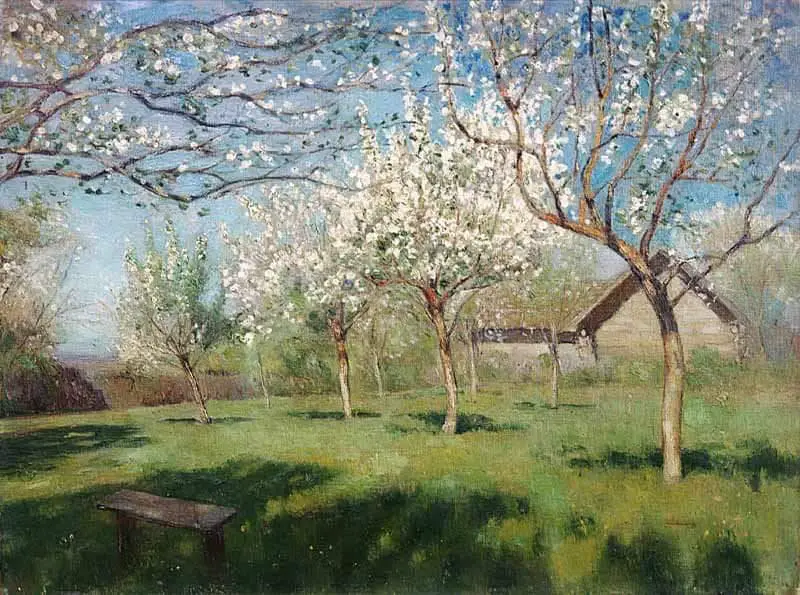
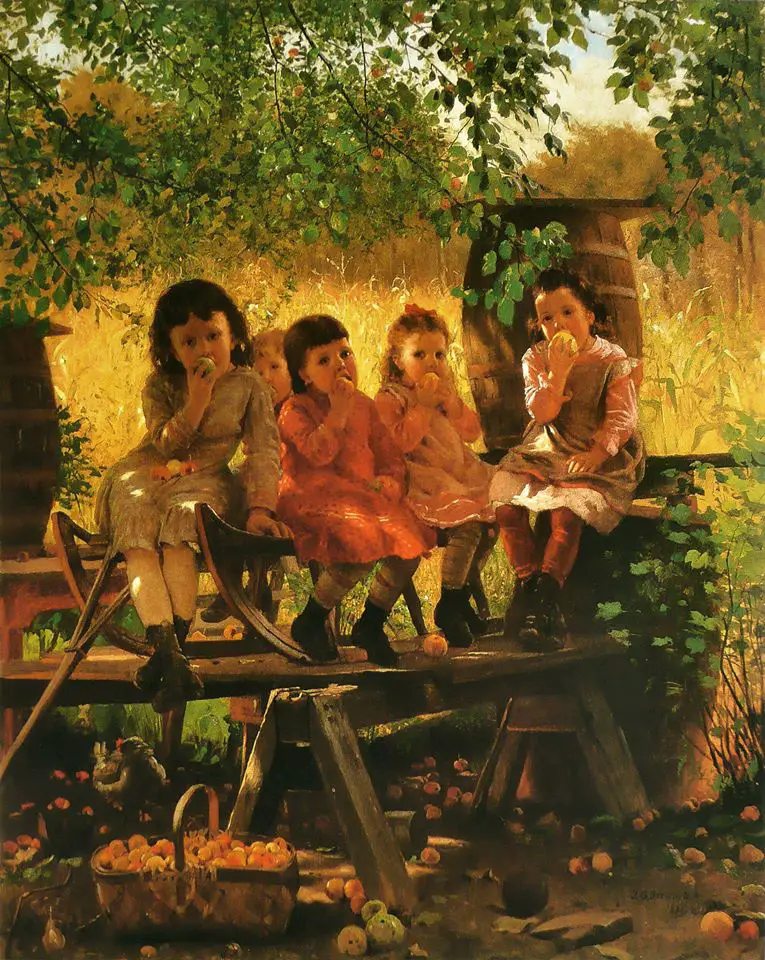
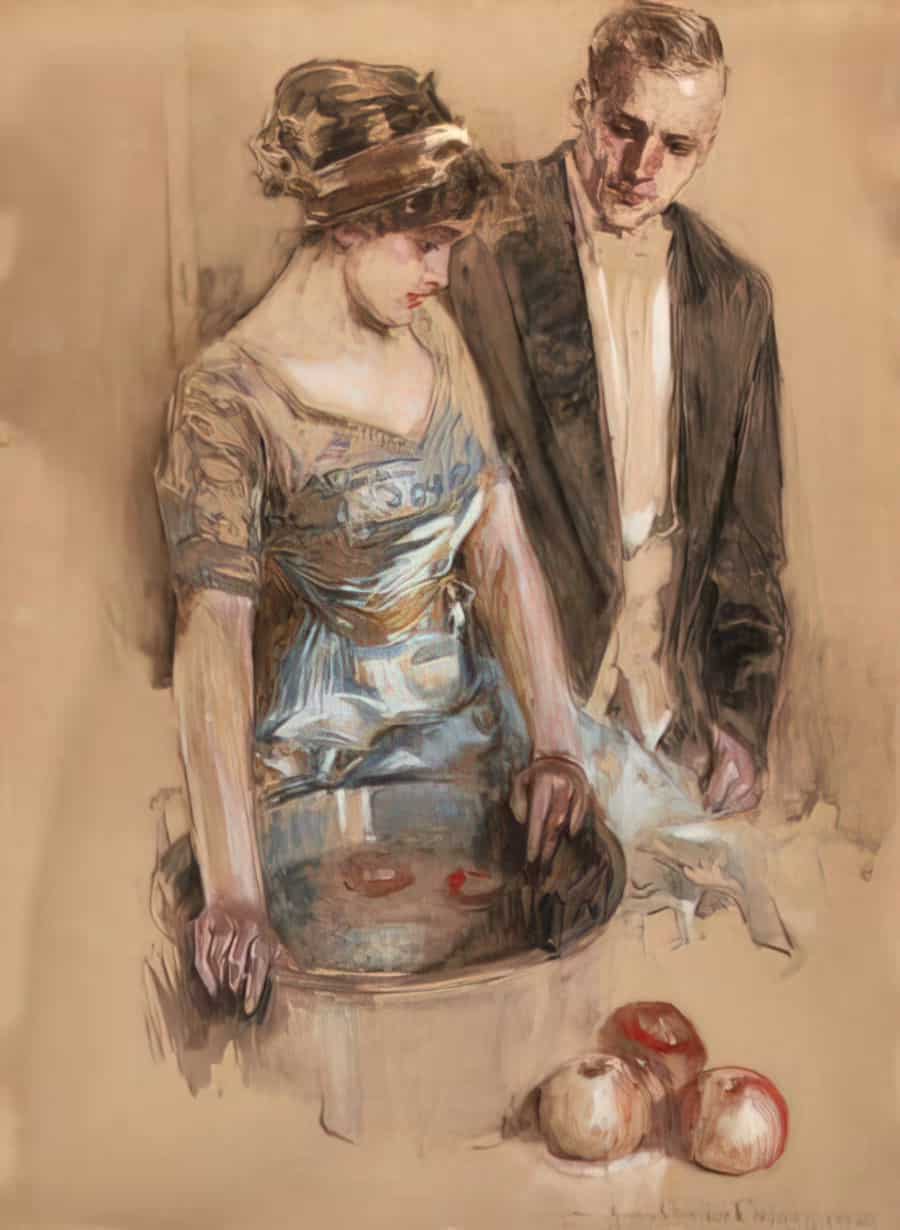
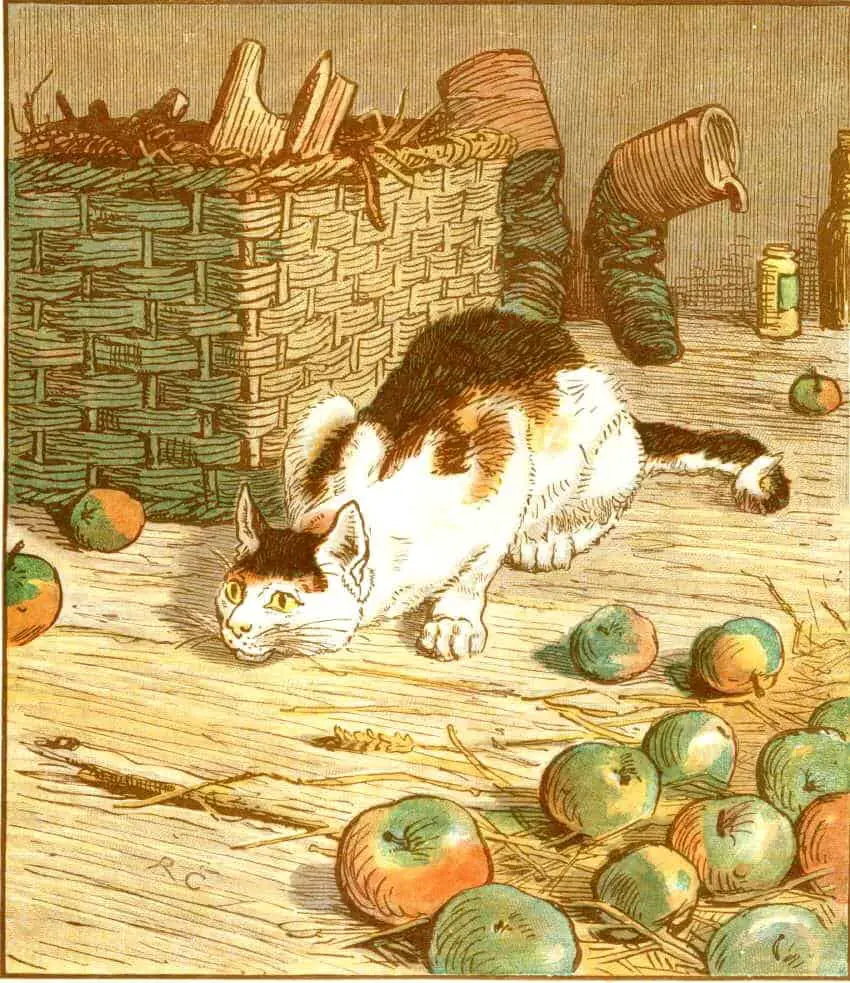
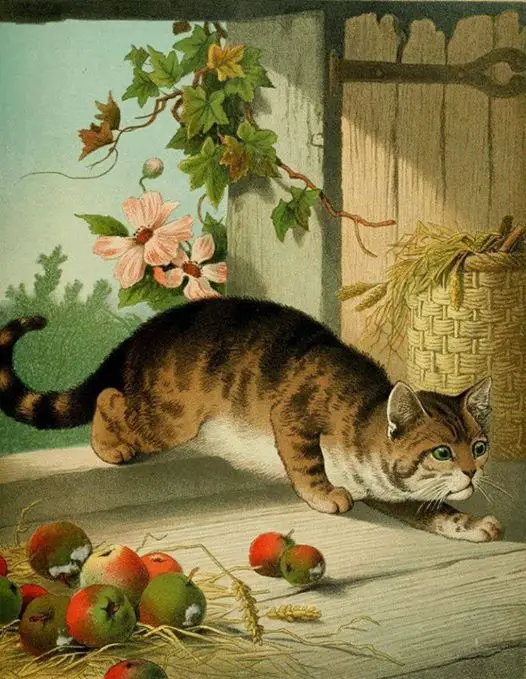
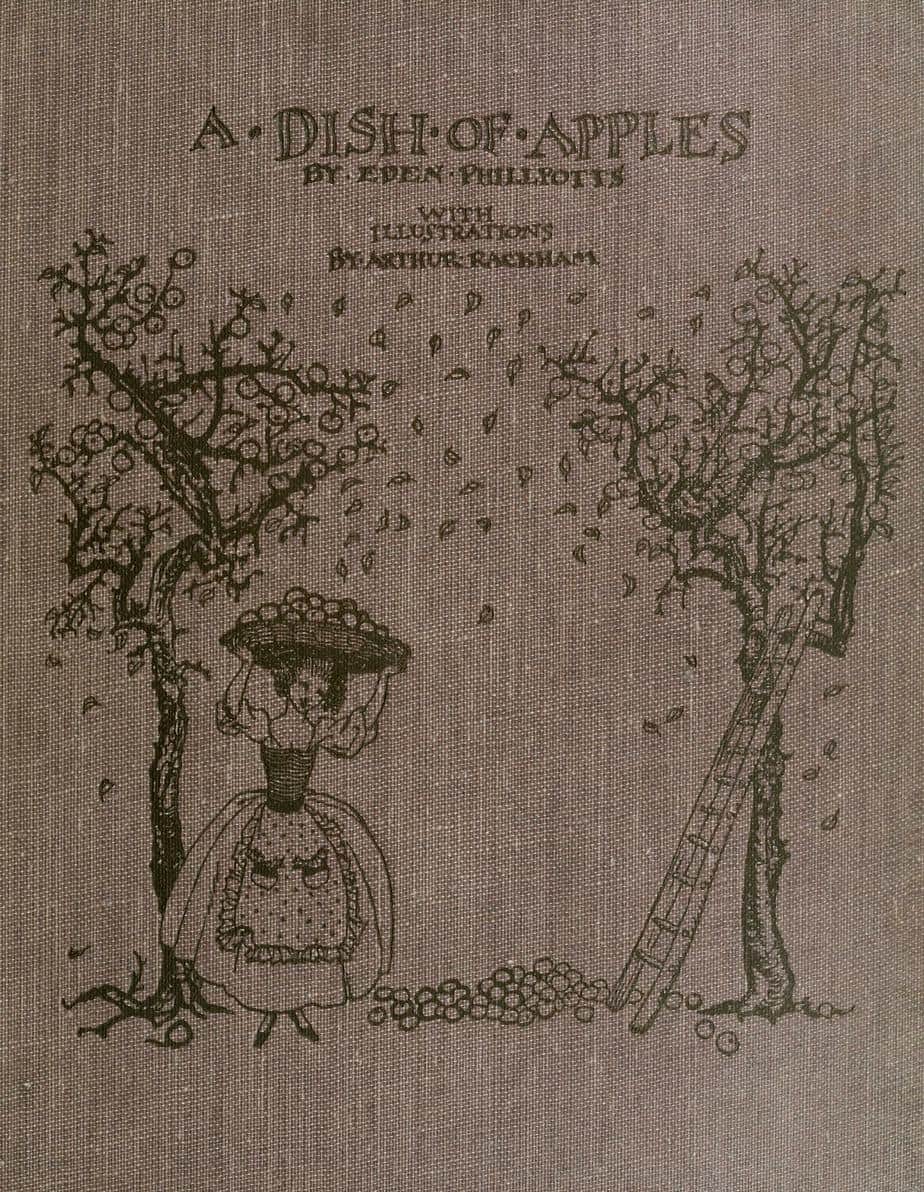
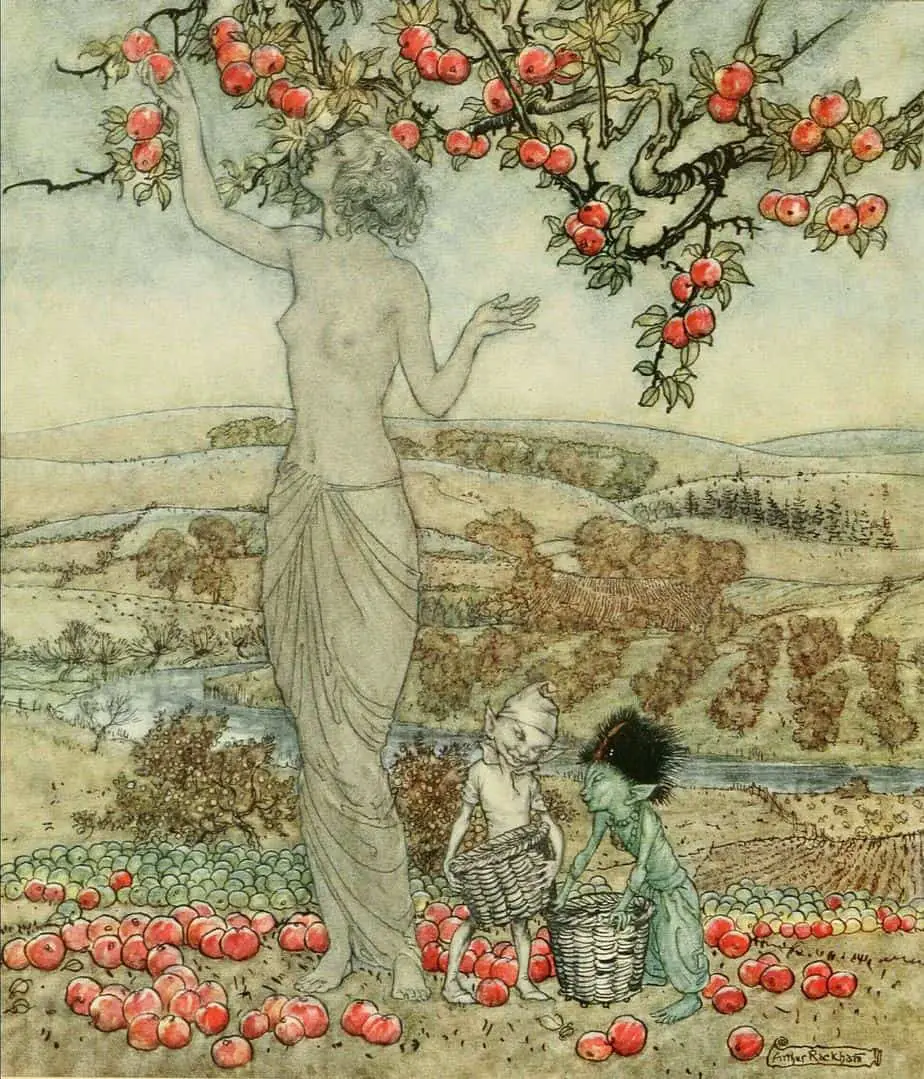
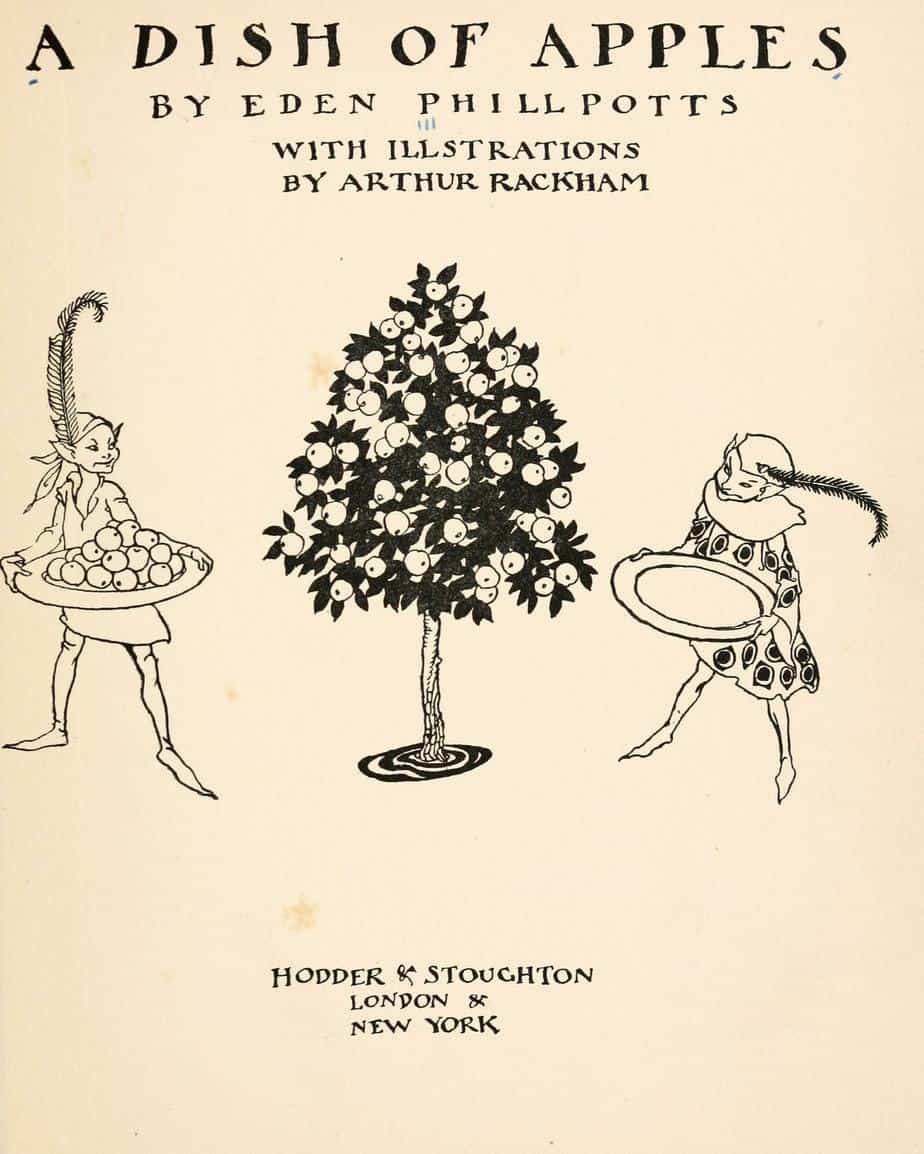
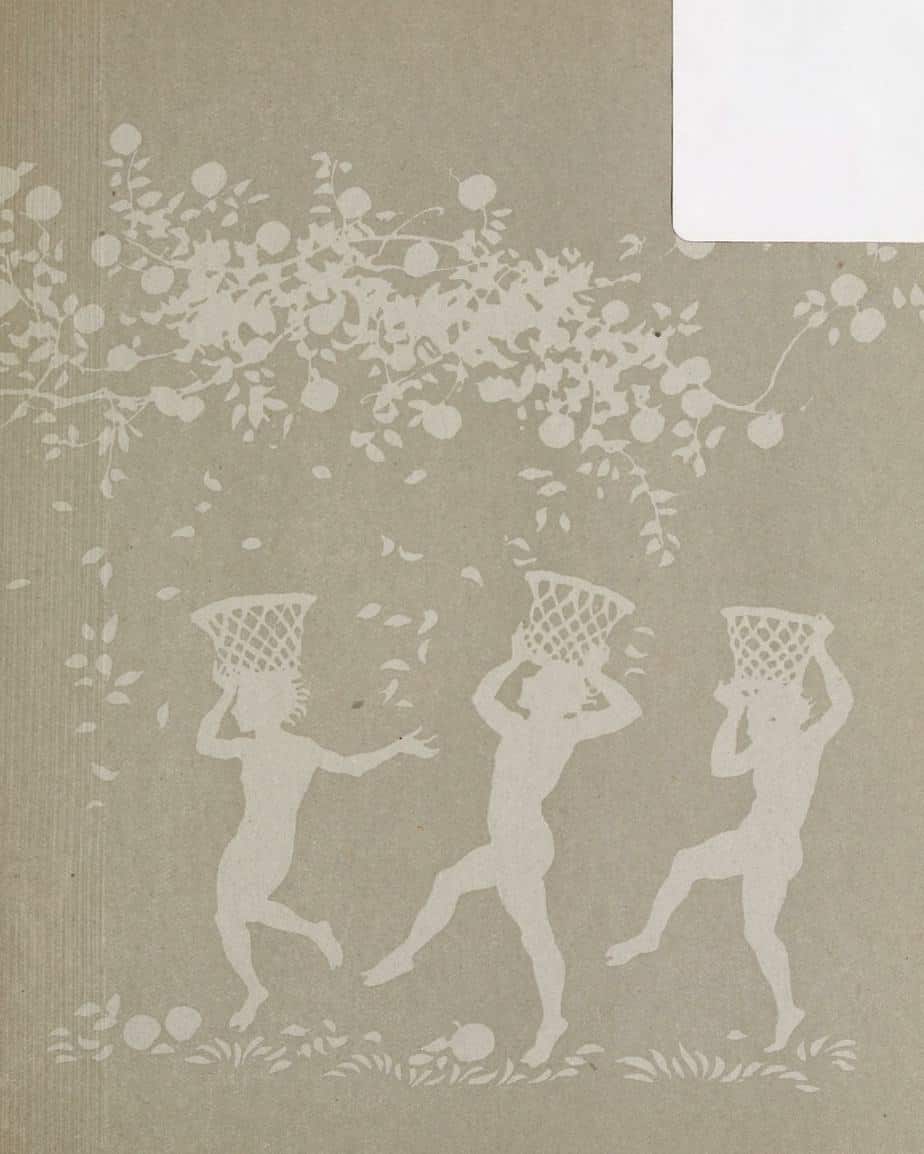
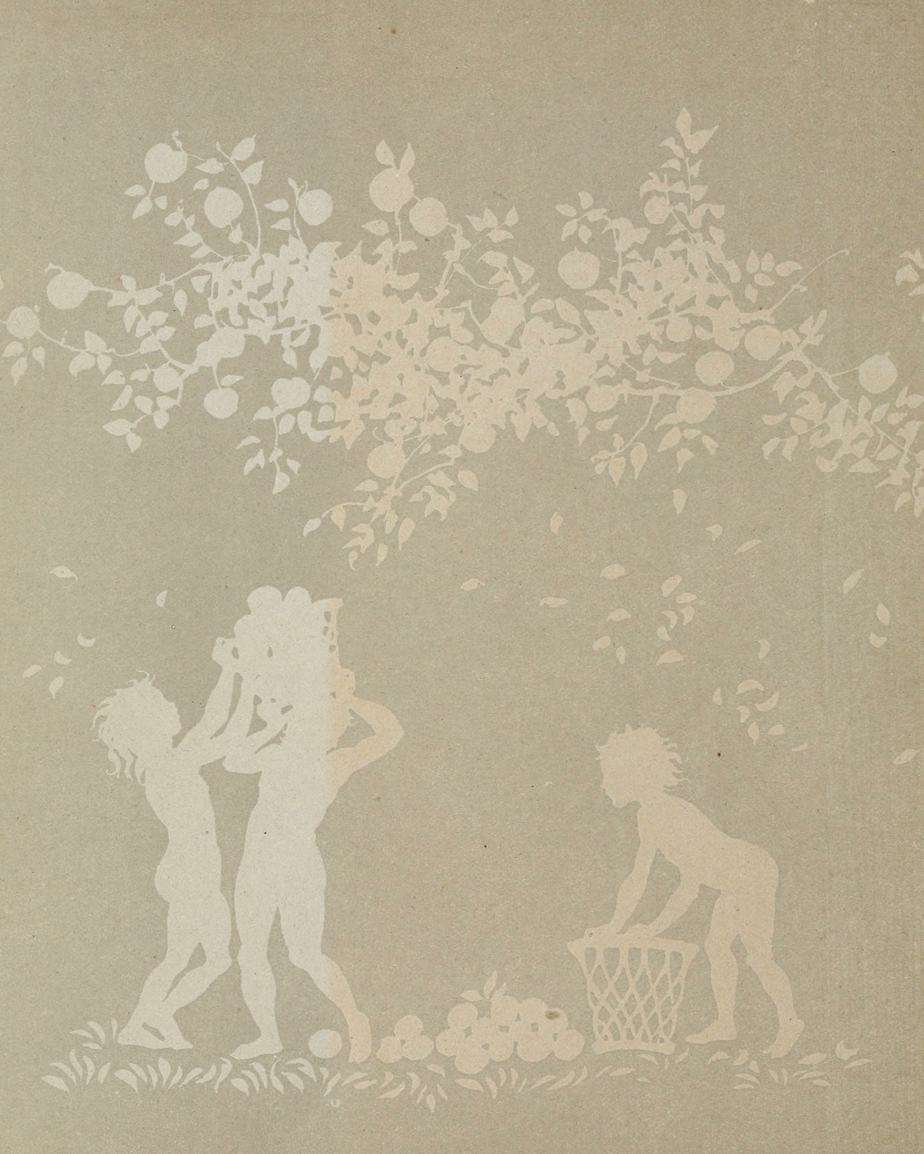
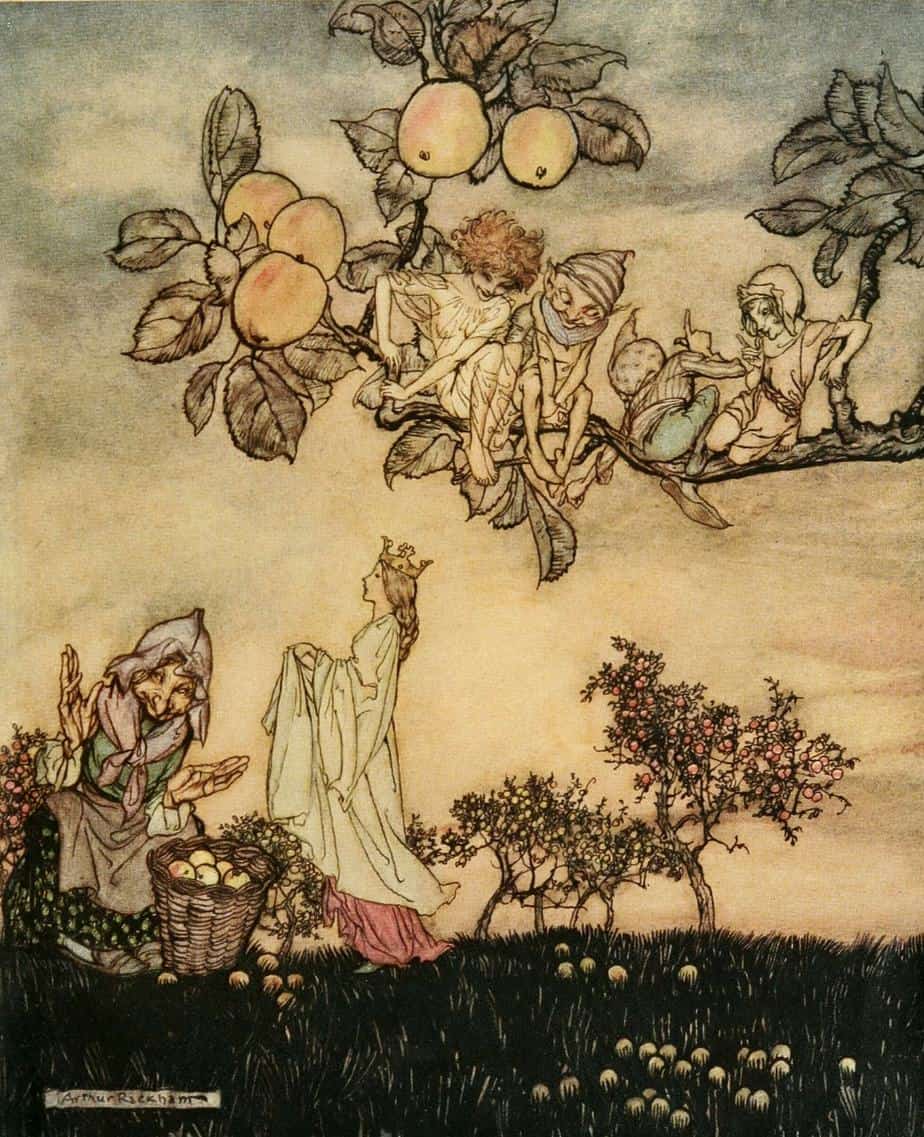
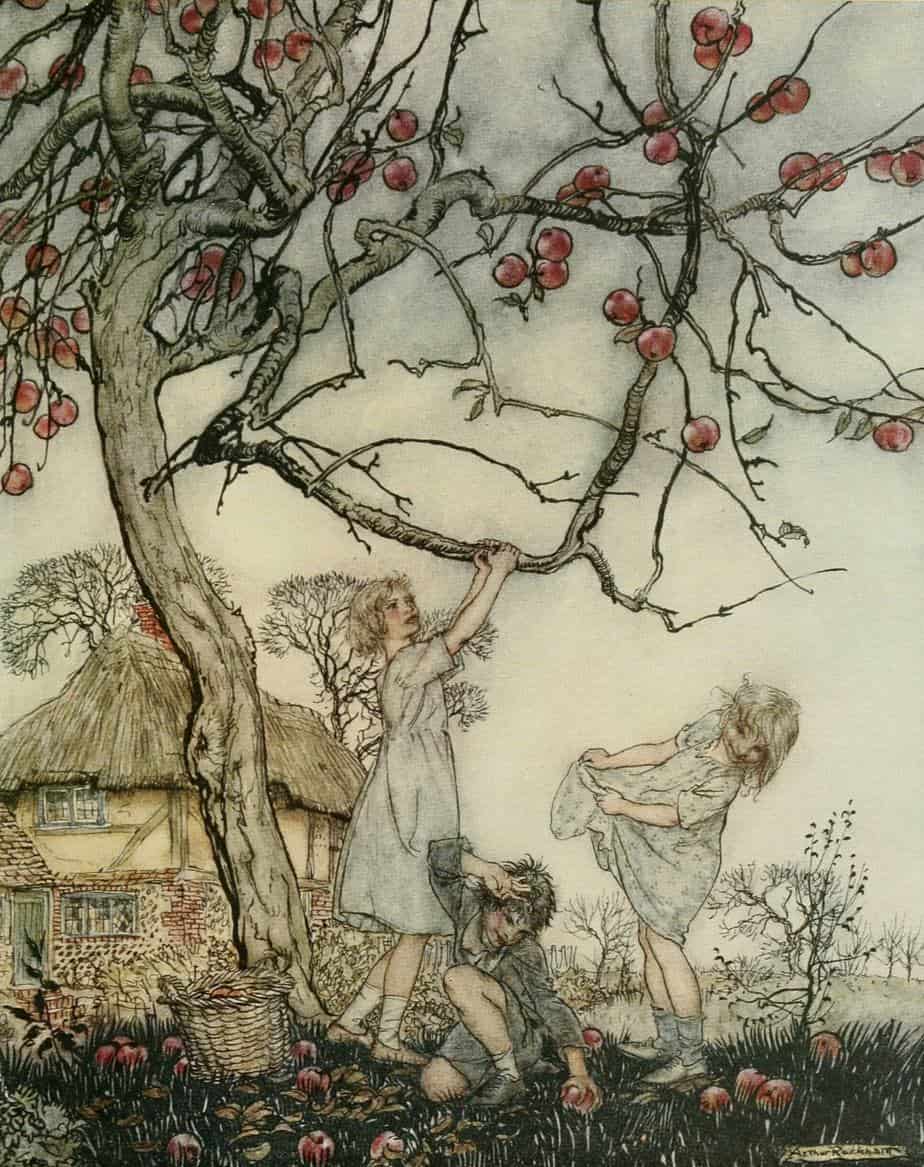
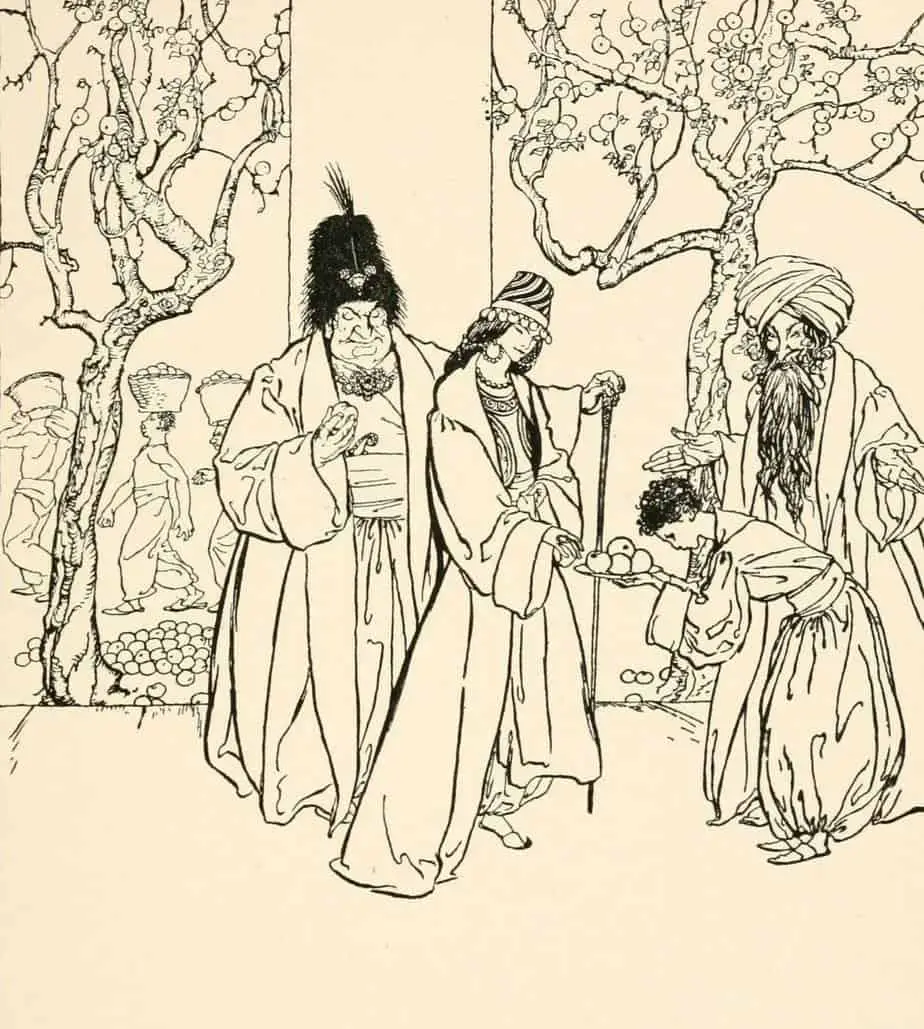
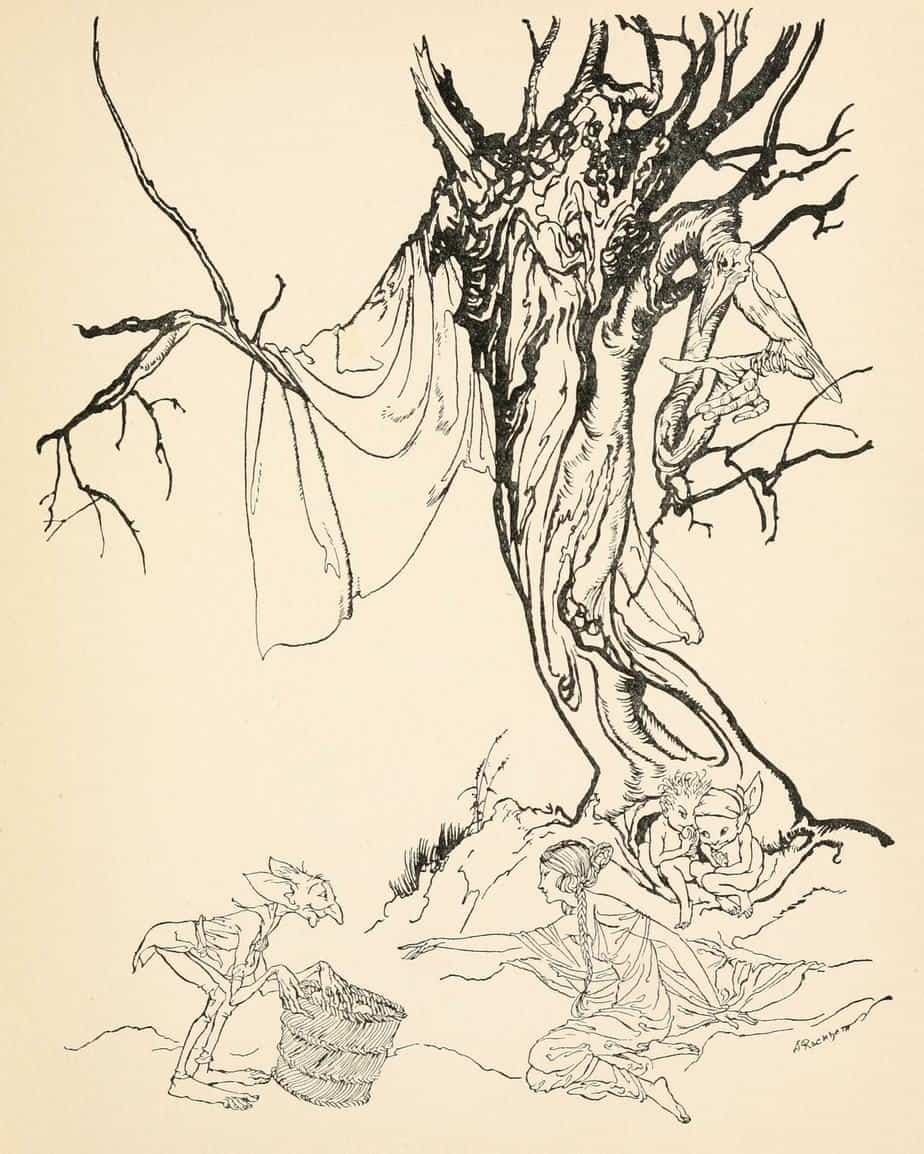
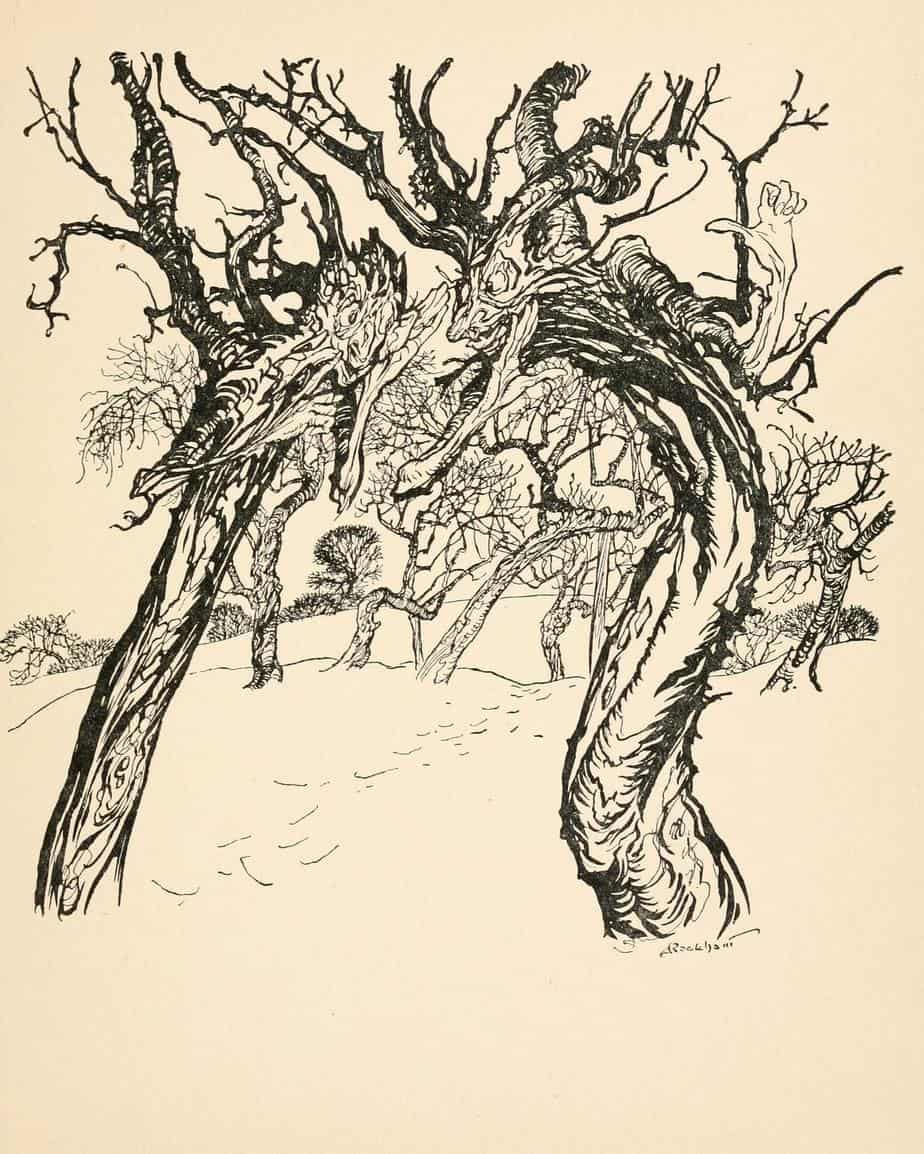
A dish of Apples, 1921, Eden Philpotts (1862-1960) illustrated by Arthur Rackham
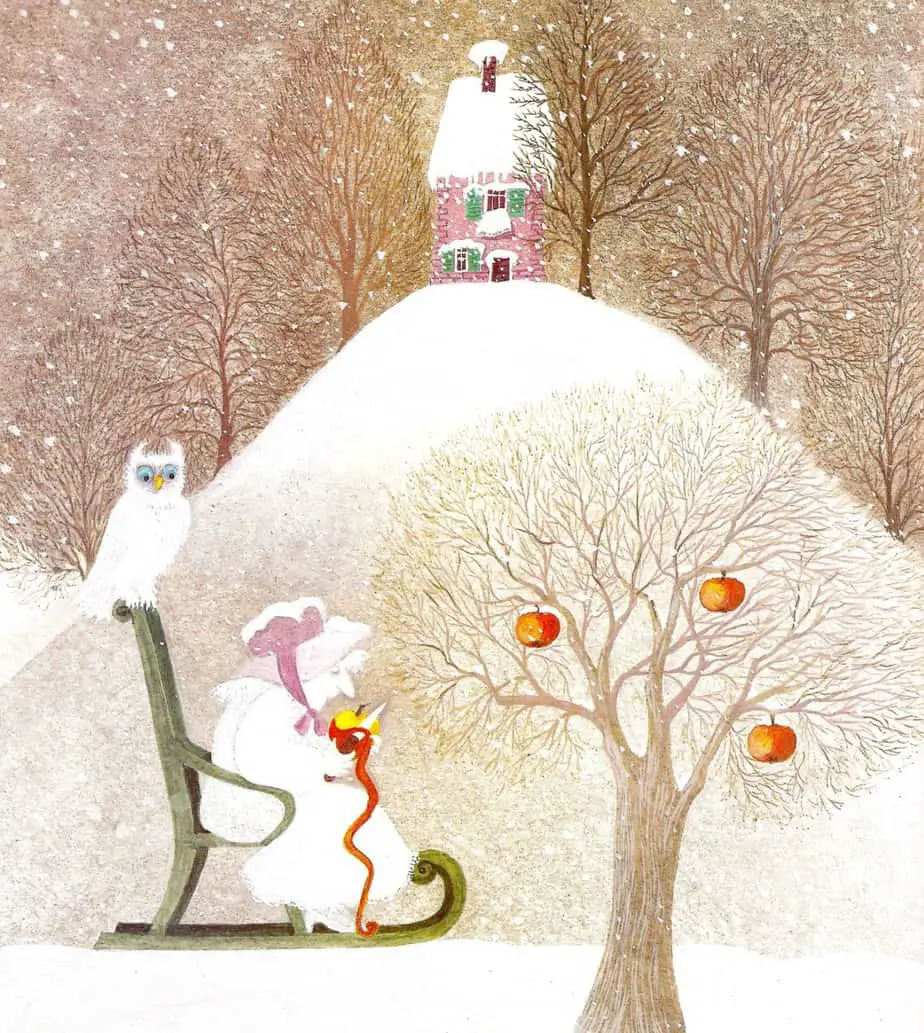
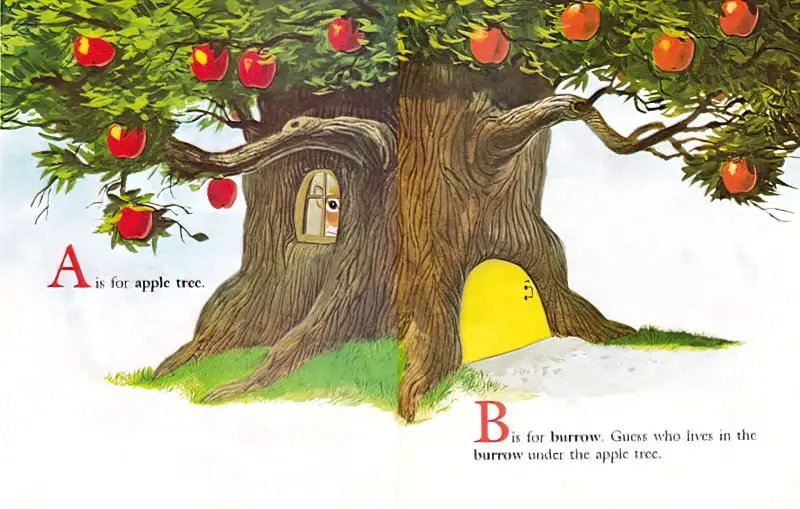
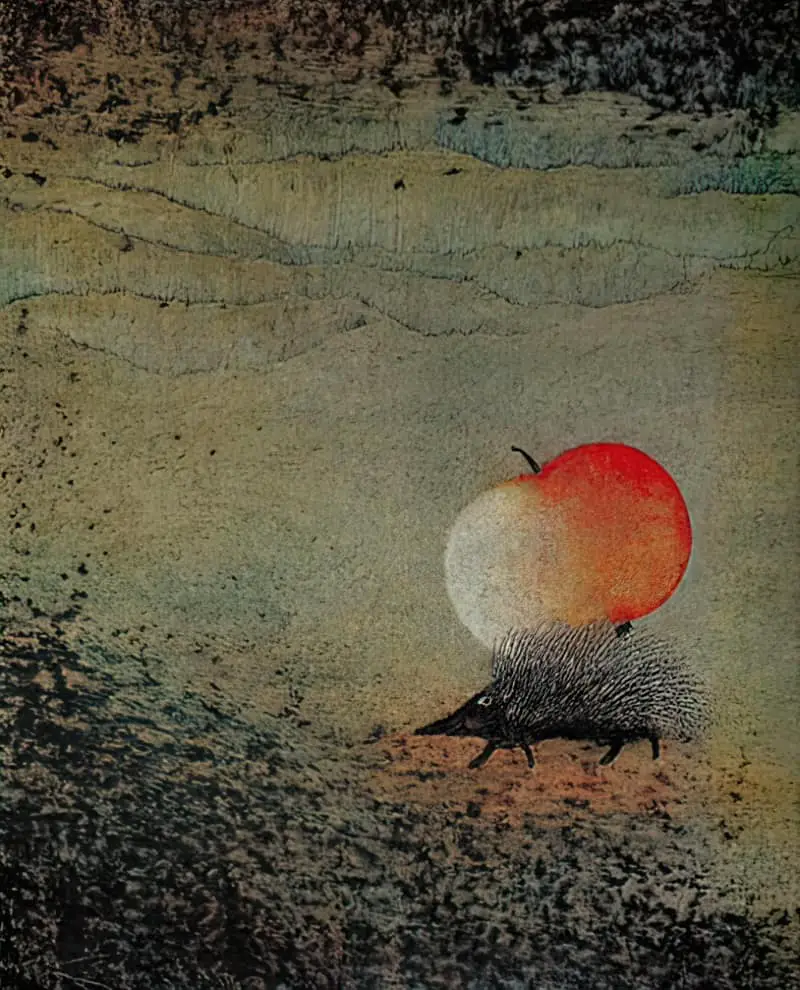
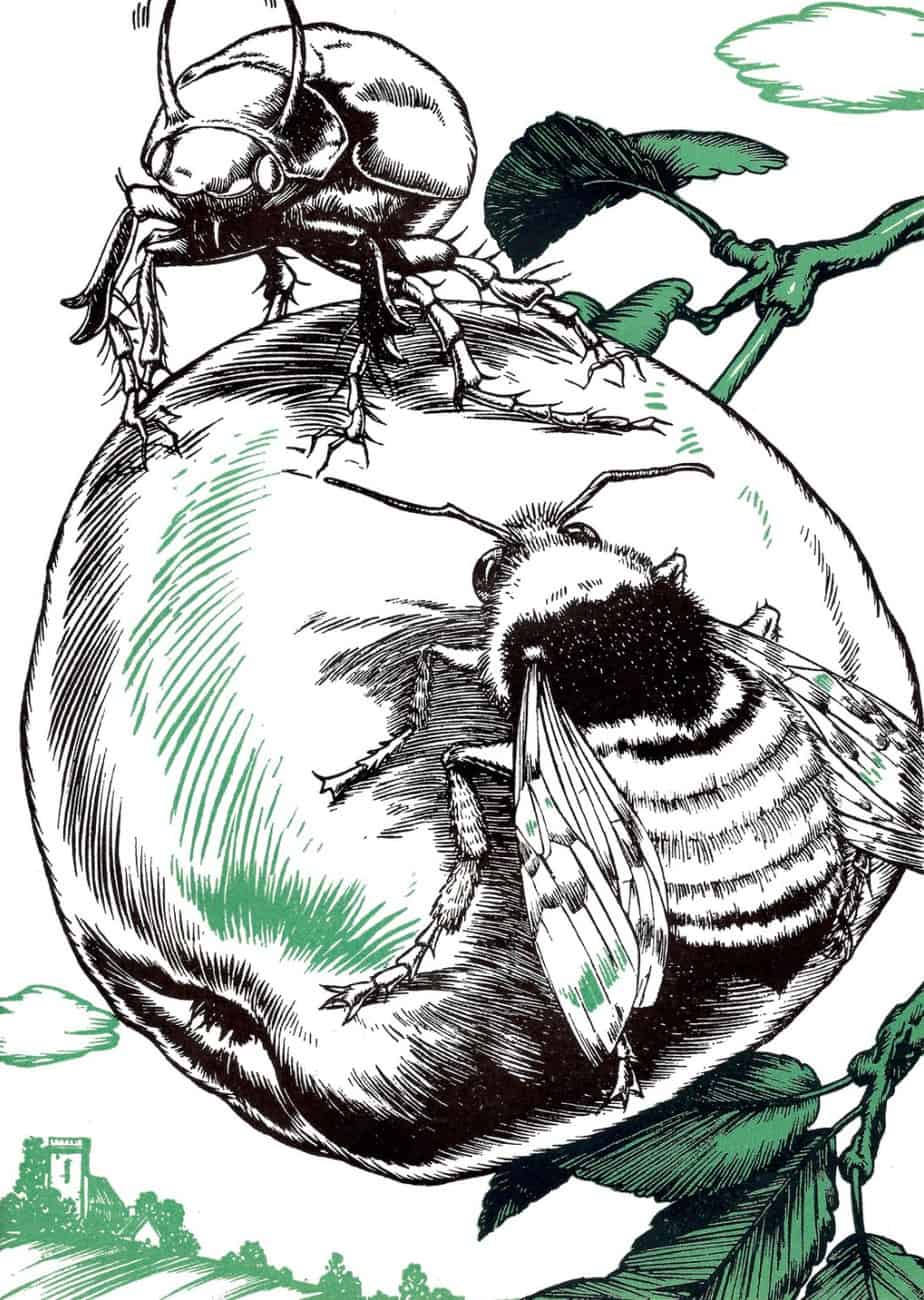
APPLES AND HALLOWEEN
October 31st: Halloween
‘Hallow once meant the same as ‘saint’. Halloween is short for Allhallows Even, the evening before All Saints’ Day. Playing at ‘spooks’ and witches, games of ‘duck apple’, eating roast chestnuts, and listening to ghost stories are, however, customs which have their beginnings in remote times.
October 31st was the eve of Samhain, the Druid New Year. It was also the festival of the dead, for the Druids believed that the spirits of the dead visited the living at this time.
When Christianity took the place of this pagan religion, the feast of All Saints took the place of Samhain. However, a few people never became Christian, but continued to believe the Druid ideas. In secret they carried on many of the Druid ceremonies. As time passed some of these ceremonies changed, and the people who took part in them became known as witches, with Samhain their most important feast.
Eating the fruits of autumn, apples and nuts, was part of the Druid feast. When Samhain became Allhallows Even, Christians continued to enjoy these fruits. Games, like ‘duck apple’ were played around bonfires in which chestnuts were roasted.
Halloween explanation from a Ladybird book
For much more on witches, see this post.
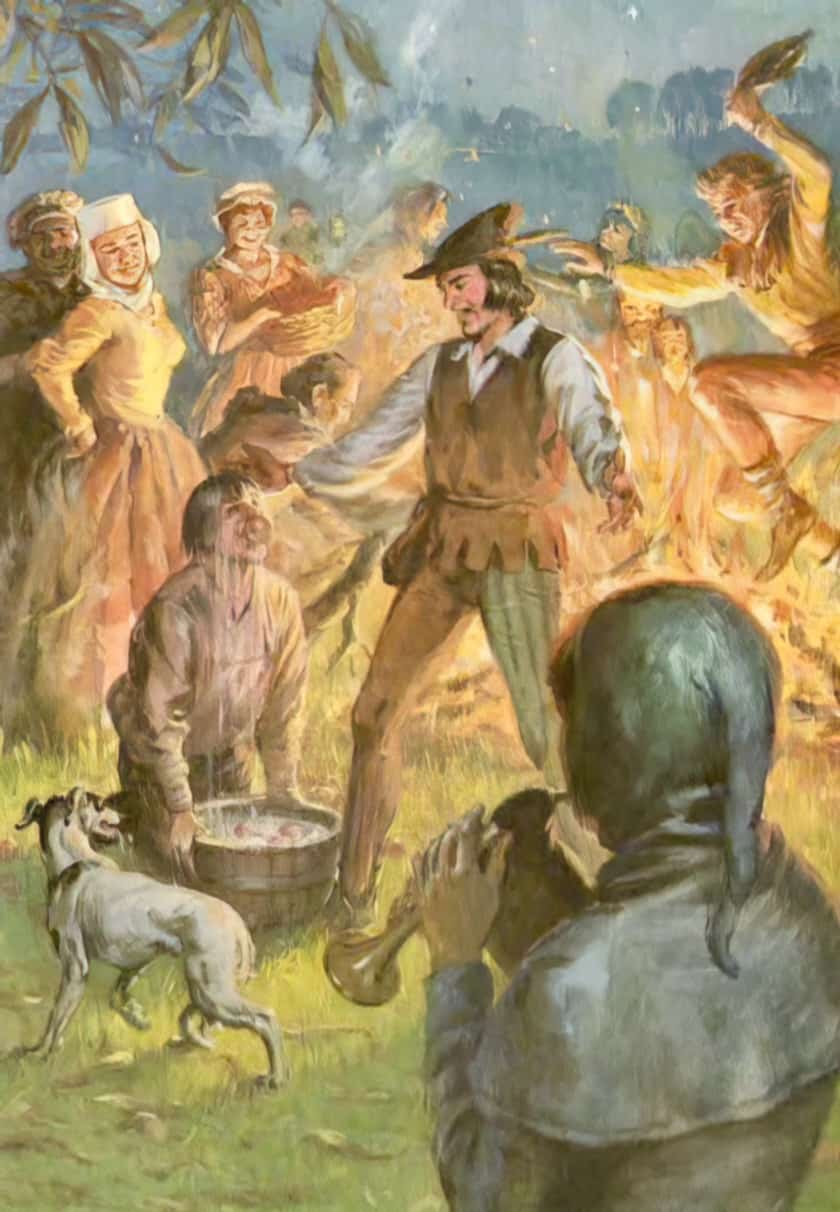
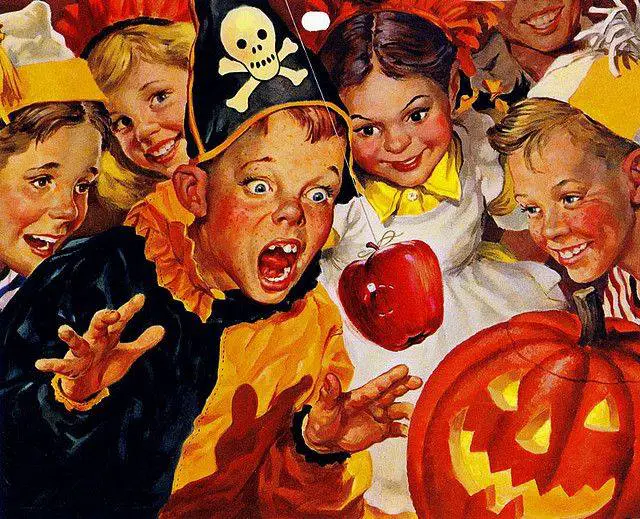
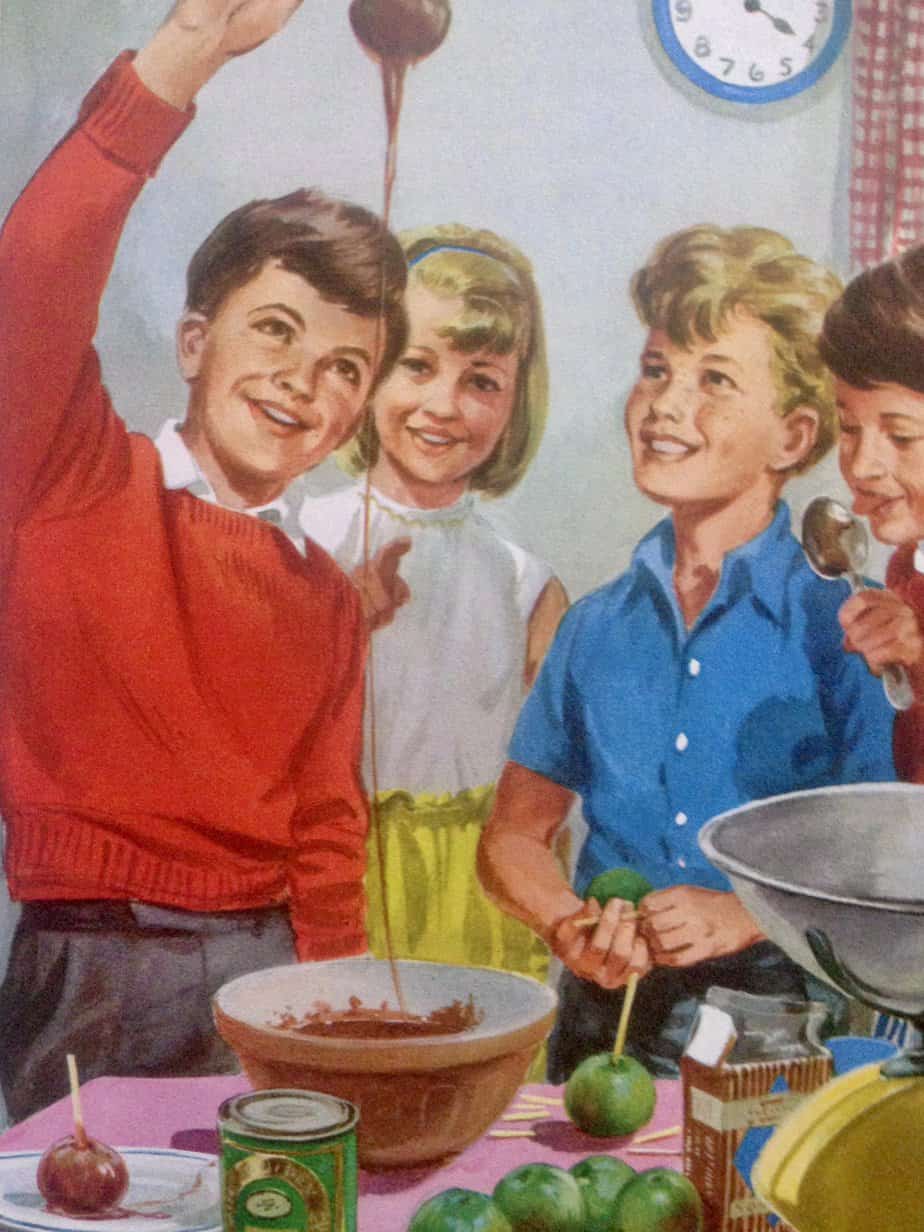
In this episode, The Folklore Podcast’s creator and host Mark Norman moves from broader folklore themes to something much smaller, and discusses the varying roles of the apple and apple trees in our folklore. Superstitions, traditions and religious imagery are all discussed, and the show additionally includes some of Mark’s field recordings from a traditional wassail ceremony in 2016.
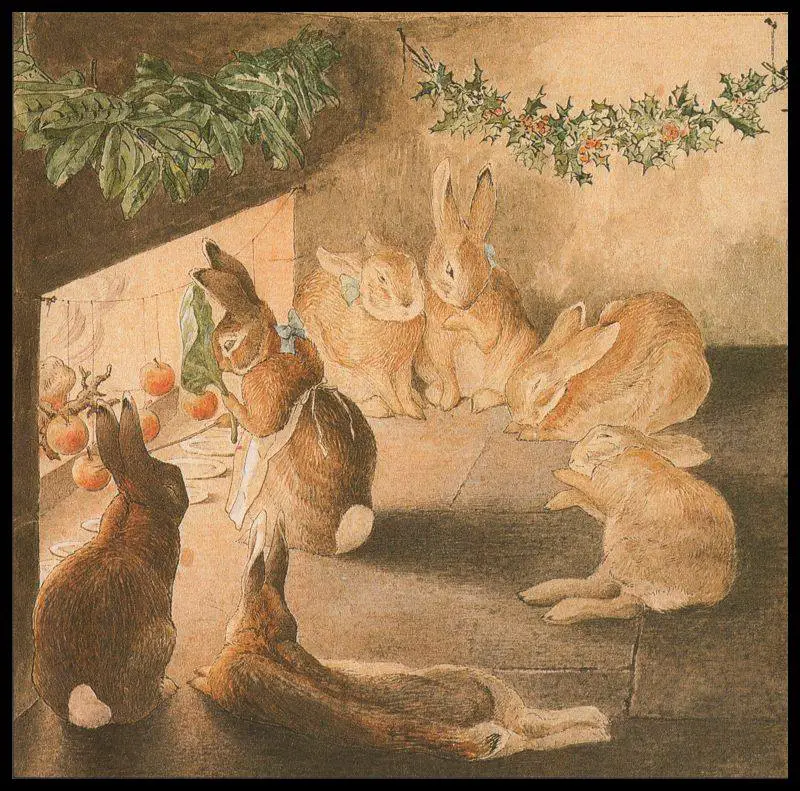
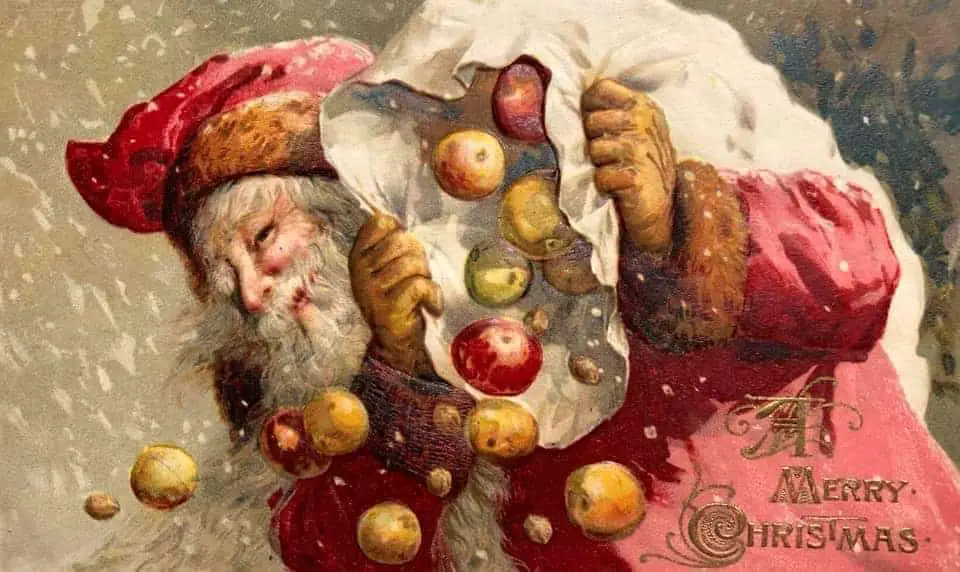
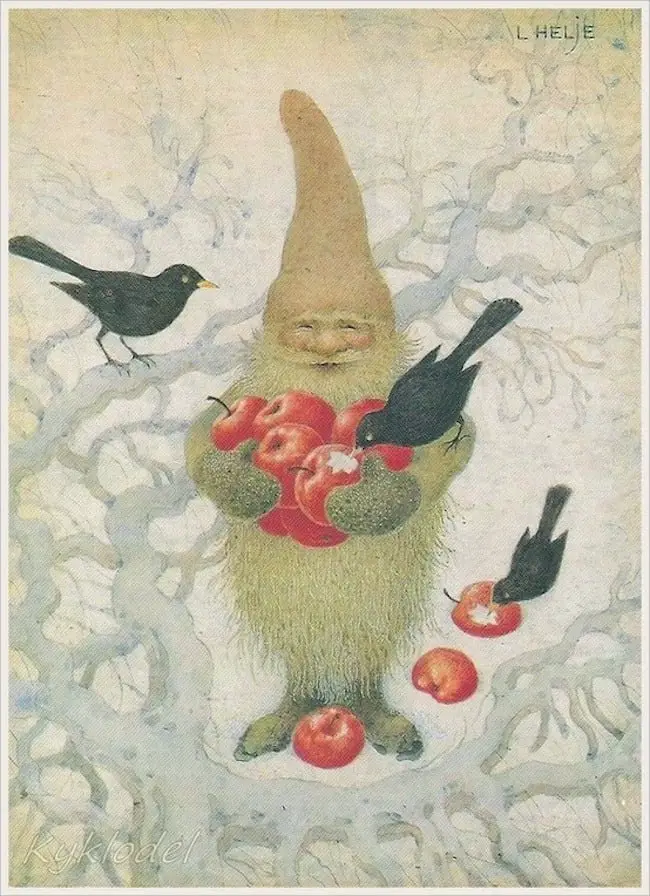
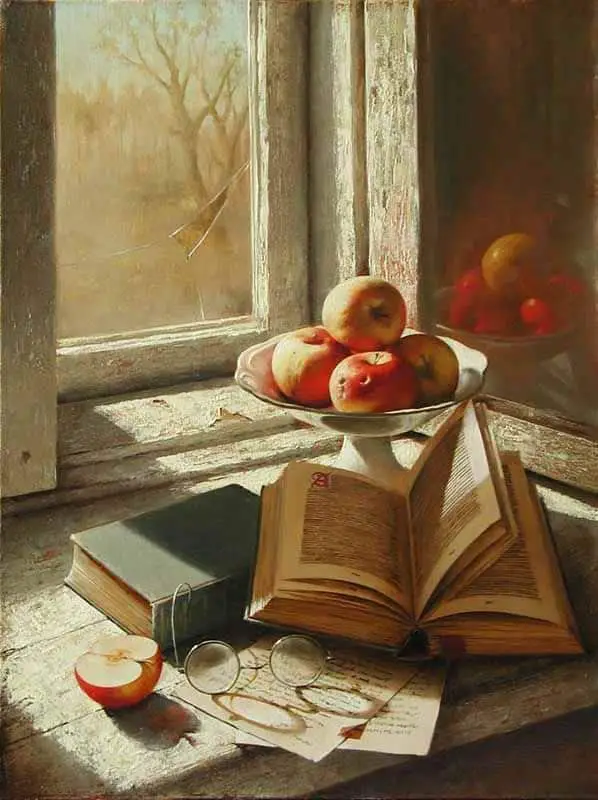
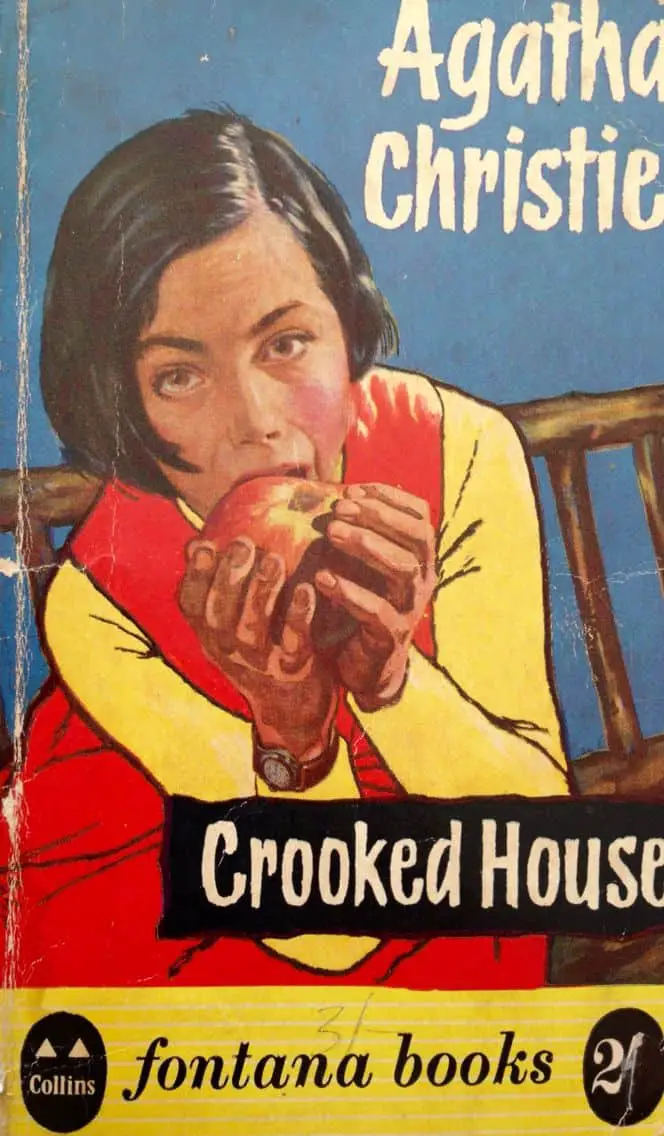
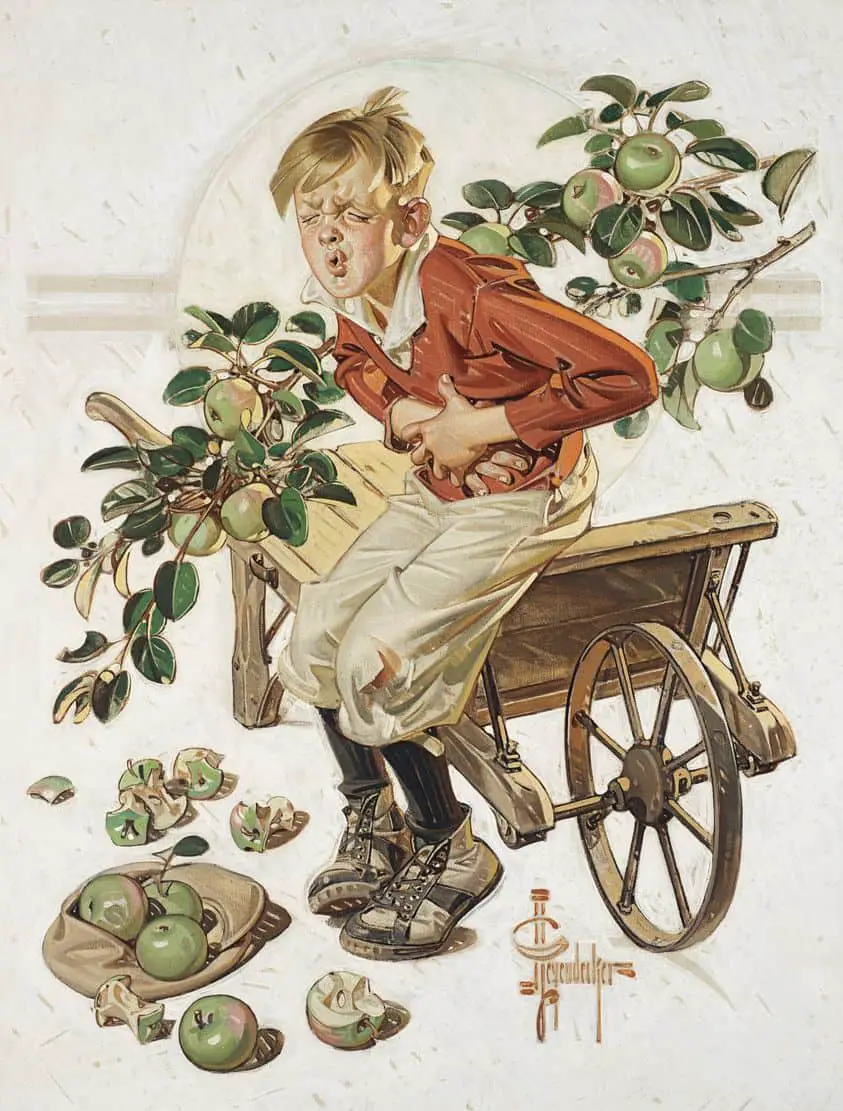
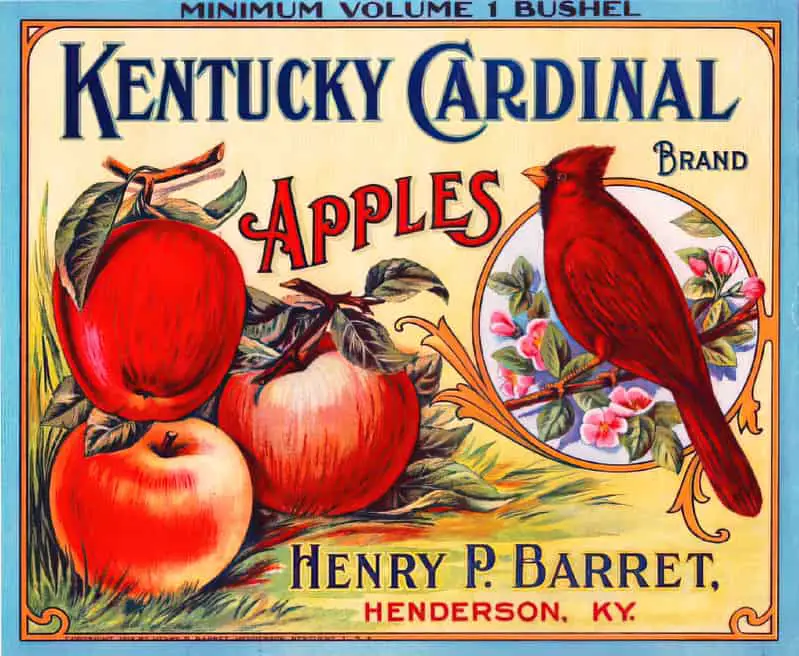
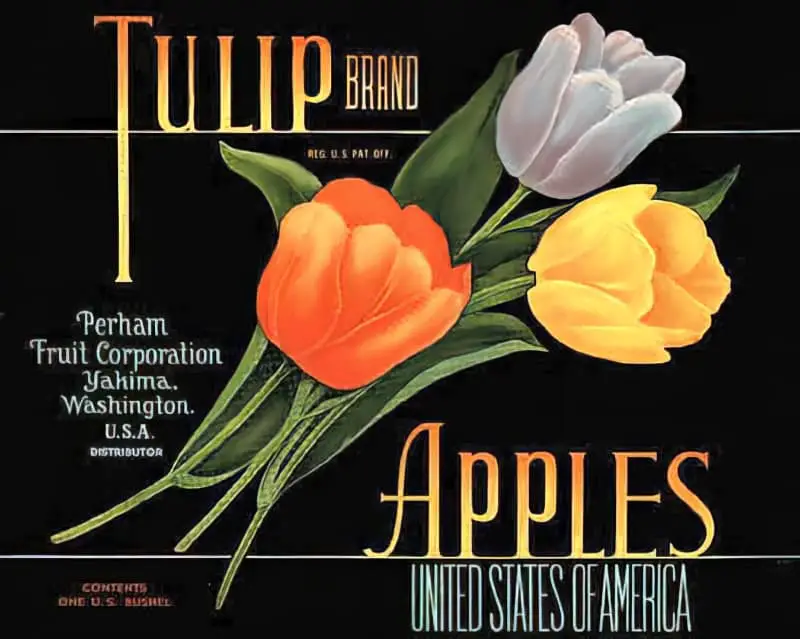
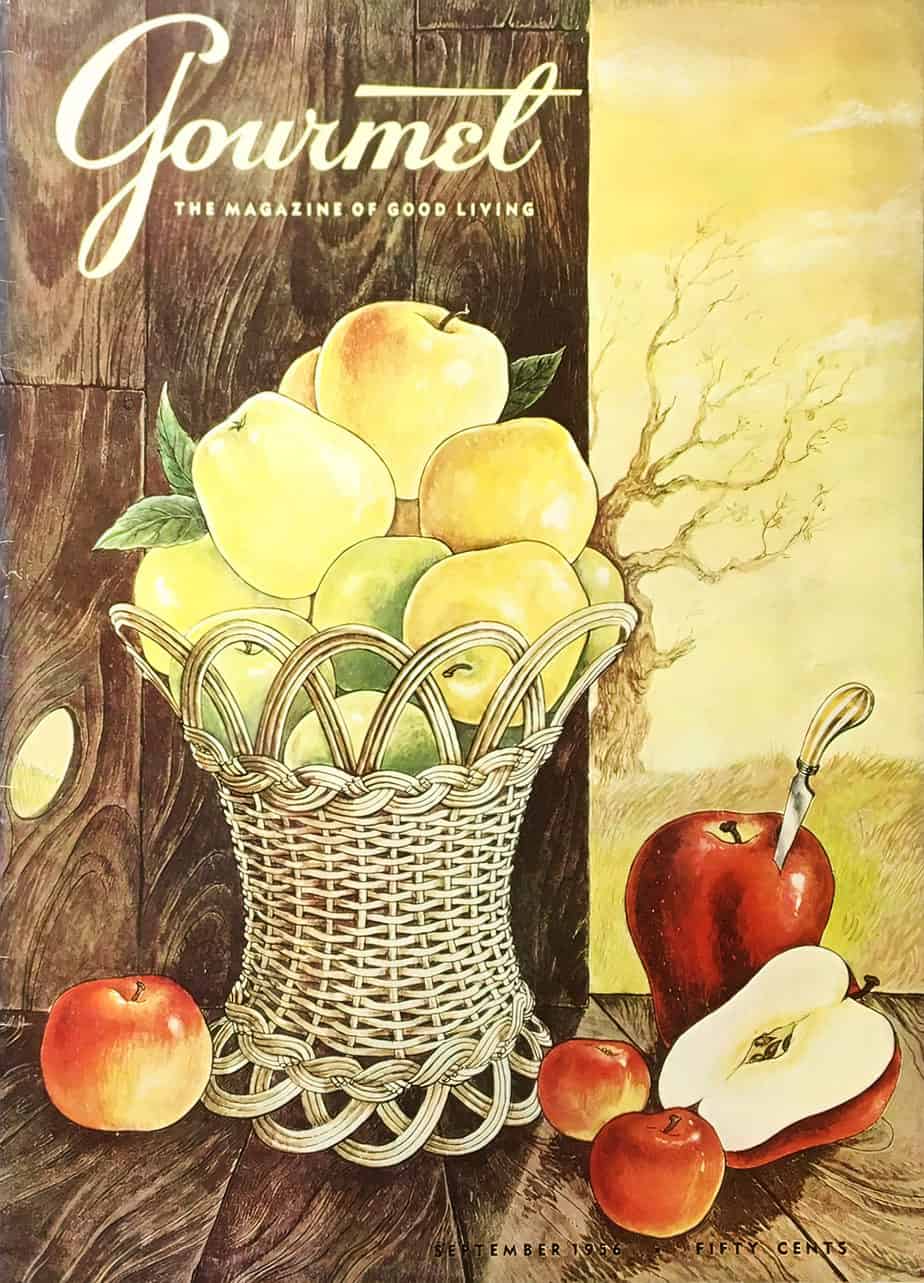
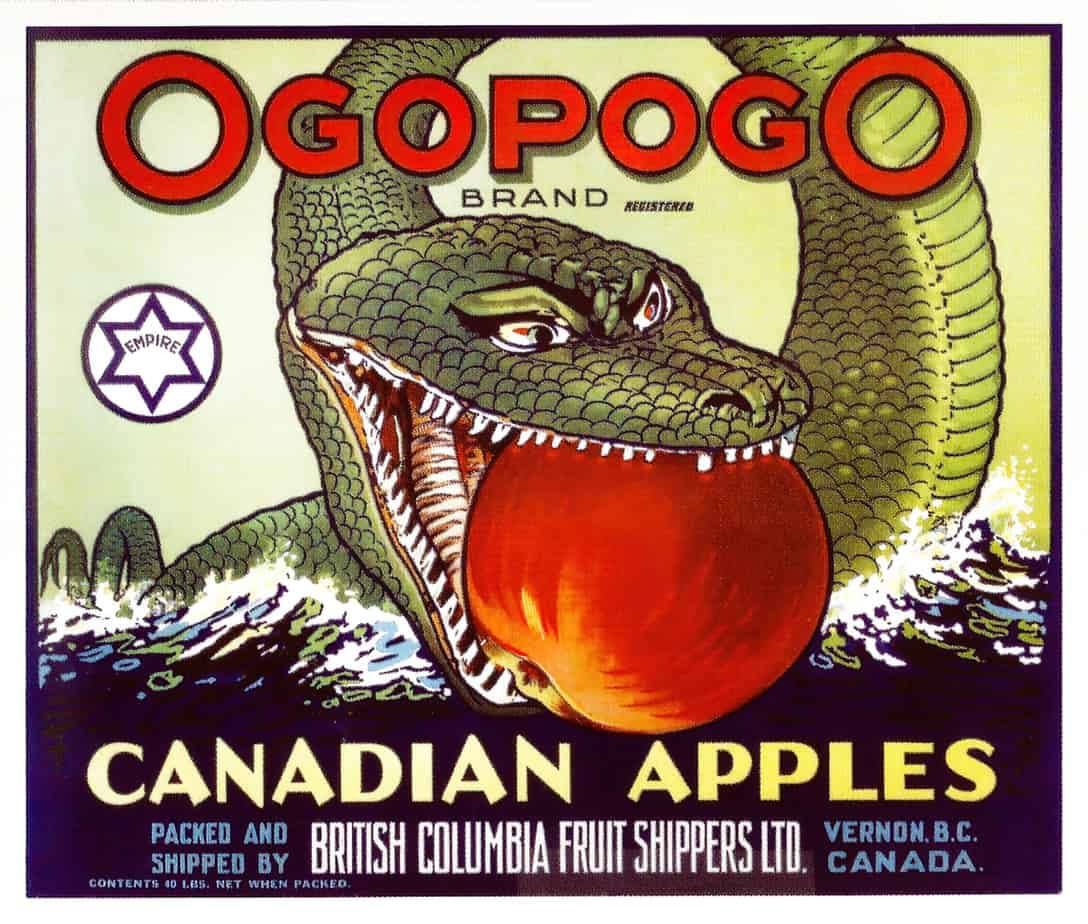
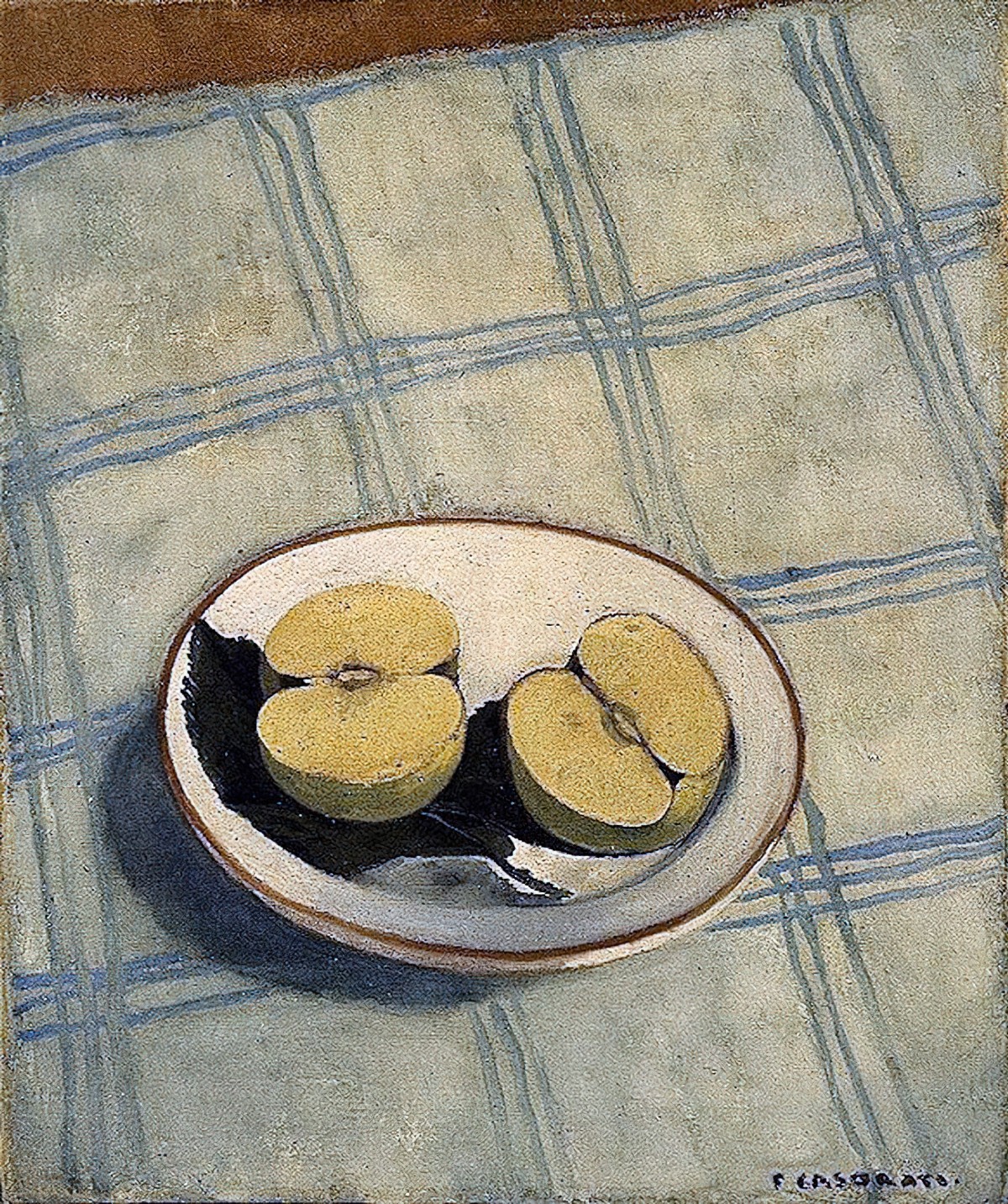
Header painting: Harrington Mann (Scottish, 1864 – 1937) Cathleen, 1906. A girl holds an apple secretively.
